2018-02-22 - Nº 147
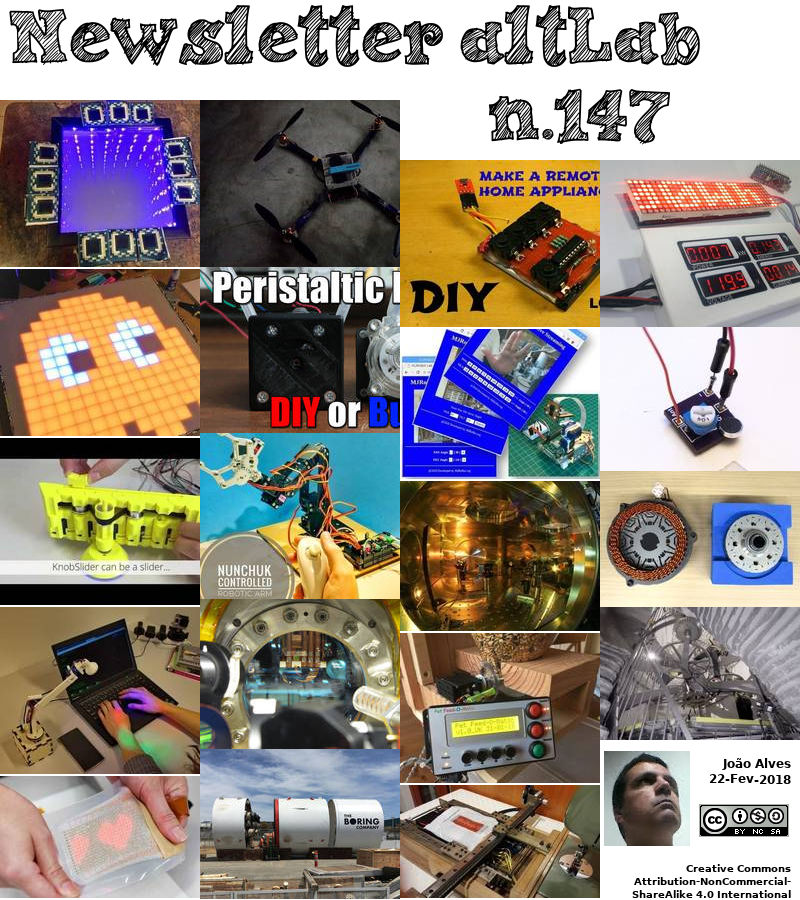
Editorial
Esta é a Newsletter Nº 147 que se apresenta com o mesmo formato que as anteriores. Se gostar da Newsletter partilhe-a!
Todas as Newsletters encontram-se indexadas no link.
Esta Newsletter tem os seguintes tópicos:
Faz hoje anos que nascia, em 1785, Jean-Charles-Athanase Peltier. Este físico francês descobriu o efeito que tem o seu nome - Peltier (1834), que é criado na junção de dois metais dissimilares, uma corrente eléctrica que produzirá calor ou frio, dependendo da direcção do fluxo de corrente. Em 1812, Peltier recebeu uma herança suficiente para se retirar da relojoaria e procurar um interesse diverso em frenologia, anatomia, microscopia e meteorologia. Peltier fez um termóstato termoeléctrico para medir a distribuição da temperatura ao longo de uma série de circuitos termo-pares, dos quais descobriu o efeito Peltier. Lenz conseguiu congelar a água por este método. A sua importância não foi totalmente reconhecida até ao posterior trabalho termodinâmico de Kelvin. O efeito agora é usado em dispositivos para medir unidades de refrigeração de temperatura e sem compressão.
Faz também anos hoje que nascia, em 1857, Heinrich Rudolf Hertz. Este físico alemão foi o primeiro a transmitir e receber ondas de rádio. Estudou sob Kirchhoff e Helmholtz em Berlim, e tornou-se professor em Bona, em 1889. O seu principal trabalho foi sobre ondas electromagnéticas (1887). Hertz gerou ondas eléctricas por meio da descarga oscilatória de um condensador através de um "loop" fornecido com uma faísca e depois detectando-os com um tipo de circuito semelhante. O condensador de Hertz era um par de hastes de metal, colocadas de ponta a ponta com um pequeno espaço para uma faísca entre eles. Hertz também foi o primeiro a descobrir o efeito fotoeléctrico. A unidade de frequência - um ciclo por segundo - é nomeada após ele. Infelizmente Hertz faleceu por envenenamento de sangue em 1894 aos 37 anos.
Faz igualmente anos hoje que nascia, em 1900, Paul Kollsman. Este engenheiro germano-americano inventou o primeiro altímetro barométrico preciso do mundo, que se tornou vital para a segurança da aviação. O altímetro barométrico original era um instrumento simples que mostrava altitude ao detectar a pressão barométrica, com uma precisão de 20 pés. Em 24 de Setembro de 1929, o histórico "voo cego" de Jimmy Doolittle provou que o altímetro Kollsman tornou possível a navegação "voando pelos instrumentos". O dispositivo era amplamente conhecido como a "Janela Kollsman" porque incluiu uma janela para marcar uma configuração manual para calibrar a pressão barométrica no nível actual do mar. A invenção desempenhou um papel importante no estabelecimento do serviço aéreo agendado de rotina nos EUA e em todo o mundo.
Por fim, faz anos hoje que nascia, em 1902, Fritz Strassmann. Este químico e físico alemão, com Otto Hahn e Lise Mietner, descobriu a fissão nuclear induzida por neutrões em urânio e, dessa forma, criou o campo de energia atómica usado tanto na bomba atómica para a guerra como nos reactores nucleares para produzir electricidade. As técnicas de química analítica de Strassmann mostraram os elementos mais leves produzidos a partir do bombardeamento de neutrões, que foram o resultado da divisão do átomo de urânio em dois átomos mais leves. Mais cedo na sua carreira, Strassmann desenvolveu a técnica do rubidium-estrôncio de amostras geológicas datadas por rádio.
Na semana que passou, a Yandex passou por um outro marco importante na missão de alcançar um carro sem condutor de nível 5, que começou com o lançamento do protótipo de maio de 2017. O carro autónomo Yandex.Taxi navegou com segurança nas ruas de Moscovo depois de uma recente tempestade de neve gerindo interacções com o tráfego, peões, veículos estacionados e outros perigos rodoviários nas ruas com neve e gelo. A movimentação, que ocorreu durante a precipitação leve e temperaturas de -6 ° C (21 ° F), foi um teste avançado que desafia o veículo com condições climáticas de inverno na via pública.
Também esta semana que passou a Boring Company de Elon Musk conseguiu uma licença para preparação e escavação preliminar de um local na capital Norte-Americana. Isto poderá significar, caso o projecto se concretize que a viagem entre Washington e Nova York demore cerca de 29 minutos usando o Hyperloop. Uma redução que seria muito significativa das actuais 3 horas.
Esta semana que passou ficámos também a saber que o relógio de 10.000 anos está a ser construído com o apoio de Jeff Bezos numa montanha nos EUA. Trata-se de um relógio especial, projectado para ser um símbolo, um ícone para o pensamento de longo prazo. É de escala monumental dentro de uma montanha no oeste do Texas. O pai do Relógio é Danny Hillis. Ele tem pensado e trabalhado no Relógio desde 1989. Ele queria construir um Relógio que marca uma vez por ano, onde a mão do século avança uma vez a cada 100 anos, e o cuco sai no milénio.
Ainda esta semana, no Dubai está a ser construída a primeira villa impressa em 3D que ficará pronta dentro de dois meses. Esta tecnologia será usada para construir moradias num programa de habitação governamental. A impressão em 3D reduzirá os custos de construção e reduzirá os prazos de entrega. Espera-se que a tecnologia perturbe forma como a indústria da construção funciona.
Por fim, hoje foi lançado com sucesso o foguetão Falcon 9 da SpaceX transportando um satélite de imagem de radar espanhol e dois satélites de demonstração para a constelação de banda larga Starlink de banda larga proposta pela SpaceX. Às 9:17, hora local, o lançamento ocorreu na Base da Força Aérea de Vandenberg na Califórnia e levou os três satélites para a baixa órbita terrestre, colocando o satélite radar PAZ 11 minutos após o levantamento. Elon Musk, fundador e CEO da SpaceX, confirmou a colocação bem sucedida dos satélites de demonstração Starlink, denominados TinTin A e B, via Twitter cerca de 80 minutos após o levantamento.
Na Newsletter desta semana apresentamos diversos projetos de maker assim como alguns modelos 3D que poderão ser úteis. É apresentada também a revista MagPi nº67 de Março.
 João Alves ([email protected])
João Alves ([email protected])
O conteúdo da Newsletter encontra-se sob a licença  Creative Commons Attribution-NonCommercial-ShareAlike 4.0 International License.
Creative Commons Attribution-NonCommercial-ShareAlike 4.0 International License.
Novidades da Semana
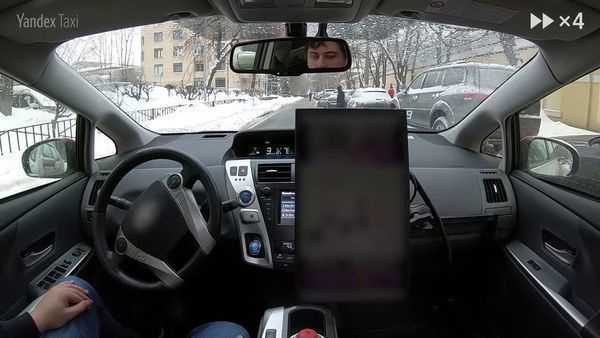
Yandex.Taxi's Self-Driving Car Conducts Winter Testing on Moscow's Public Streets
"Last week the Yandex.Taxi driverless car team passed another major milestone on our mission to achieve a level 5 self-driving car, which began with the May 2017 prototype launch. The Yandex.Taxi autonomous car safely navigated the streets of Moscow after a recent snowstorm managing interactions with traffic, pedestrians, parked vehicles and other road hazards on snowy and icy streets. The drive, which occurred during light precipitation and -6 C (21 F) temperatures, was an advanced test challenging the vehicle with winter weather conditions on public roads. Over the last few months the team has been testing prototypes in winter weather conditions on a closed course near Moscow. In December 2017, the team debuted the car on public roads and began collecting data during public street testing to further advance Yandex’s driverless technology. Navigating snow-covered city streets requires significant amounts of data including images of both the snowy roads and street signs." [...]

Elon Musk's Boring Company gets preliminary permit for NYC-DC Hyperloop
"A 29-minute trip from D.C. to New York may seem too good to be true. And it very well may be. But that isn’t stopping Elon Musk from pushing forward with plans to build a Hyperloop along the eastern corridor. And while it’s a very small, very vague step forward, Musk’s Boring Company has received a permit for preparation and preliminary excavation of a site in the nation’s capital. The exact location is 53 New York Avenue NE, next to a McDonald’s and near the Bureau of Alcohol, Tobacco, Firearms and Explosives, according to The Washington Post. In July, Elon Musk tweeted that he had received verbal government approval to build a multi-state underground Hyperloop on the East Coast." [...]
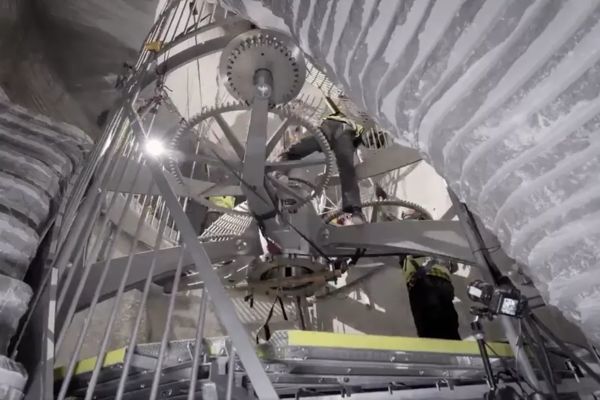
the 10,000 Year Clock
"We are building a 10,000 Year Clock. It's a special Clock, designed to be a symbol, an icon for long-term thinking. It's of monumental scale inside a mountain in West Texas. The father of the Clock is Danny Hillis. He's been thinking about and working on the Clock since 1989. He wanted to build a Clock that ticks once a year, where the century hand advances once every 100 years, and the cuckoo comes out on the millennium." [...]

Dubai to soon unveil first 3D-printed villa
"Dubai will see its first 3D-printed villa in two months, Engineer Hussain Nasser Lootah, director-general of the Dubai Municipality, told the Emarat Al Youm daily. The technology would be used to build villas in a government housing programme. 3D printing will reduce construction costs and shorten delivery timeframes. The technology is expected to disrupt the construction industry. According to Dubai's 3D Printing Strategy, 25 per cent of all buildings in Dubai will be 3D printed by 2030. The Dubai Municipality has brought all the necessary tools and equipment to build the villa, said Lootah." [...]

SpaceX launches pair of its demo internet satellites with Spanish radar satellite
" SpaceX on Feb. 22 launched a Falcon 9 rocket carrying a Spanish-owned radar-imaging satellite and two demonstration satellites for SpaceX’s proposed broadband Starlink broadband constellation. The 9:17 a.m. Eastern launch from Vandenberg Air Force Base in California carried all three spacecraft to low Earth orbit, deploying the PAZ radar satellite 11 minutes after liftoff. Elon Musk, SpaceX’s founder and CEO, confirmed successful deployment of the Starlink demo satellites, dubbed TinTin A and B, via Twitter about 80 minutes after liftoff. “Tintin A & B will attempt to beam “hello world” in about 22 hours when they pass near LA,” Musk tweeted. The day before launch, Musk said Starlink — a global constellation of 4,500 broadband spacecraft in low-Earth orbit — “will serve [the] least served.” SpaceX did not attempt to land Falcon 9’s previously flown first stage following the mission but did attempt to recover the rocket’s upgraded fairing using a parafoil and ship equipped with a large catcher’s net. The fairing, which enshrouds the satellite on the way to orbit, cost $6 million — money SpaceX would like to save if possible." [...]
Outras Notícias

Long-Lived Mars Rover Opportunity Keeps Finding Surprises
"NASA's Mars Exploration Rover Opportunity keeps providing surprises about the Red Planet, most recently with observations of possible "rock stripes." The ground texture seen in recent images from the rover resembles a smudged version of very distinctive stone stripes on some mountain slopes on Earth that result from repeated cycles of freezing and thawing of wet soil. But it might also be due to wind, downhill transport, other processes or a combination. Opportunity landed on Mars in January 2004. As it reaches the 5,000th Martian day, or sol, of what was planned as a 90-sol mission, it is investigating a channel called "Perseverance Valley," which descends the inboard slope of the western rim of Endeavour Crater. "Perseverance Valley is a special place, like having a new mission again after all these years," said Opportunity Deputy Principal Investigator Ray Arvidson of Washington University in St. Louis." [...]

RoMA: Interactive Fabrication with Augmented Reality and a Robotic 3D Printer
"We present the Robotic Modeling Assistant (RoMA), an interactive fabrication system providing a fast, precise, hands-on and in-situ modeling experience with an augmented reality CAD editor and a robotic arm 3D printer. As a designer creates a new model using RoMA AR CAD editor, features are constructed concurrently by a 3D printing robotic arm sharing the same design volume. The partially printed physical model then serves as a tangible reference for the designer as she adds new elements to her design. With RoMA, users can integrate real-world constraints into a design rapidly, allowing them to create well-proportioned tangible artifacts. Users can even directly design on and around an existing object, and extending the artifact by in-situ fabrication. On the hardware end, RoMA consists of an augmented reality headset with its controllers (both indicator and cutter), a rotating platform, and a 6DOF robotic 3D printer." [...]
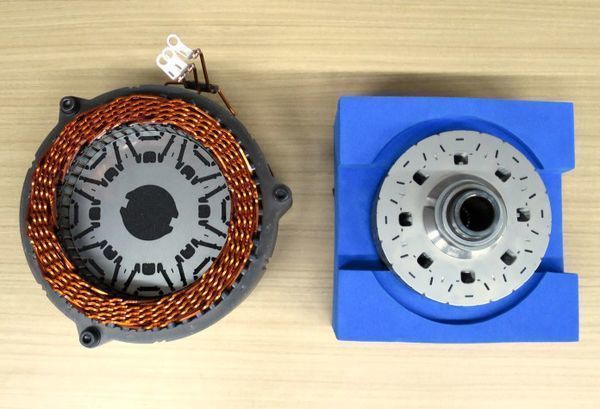
Toyota Develops New Magnet for Electric Motors Aiming to Reduce Use of Critical Rare-Earth Element by up to 50%
"Toyota Motor Corporation (Toyota) announces that it has developed the world's first*1 neodymium-reduced, heat-resistant magnet. Neodymium magnets are used in various types of motors such as the high-output motors found in electrified vehicles, use of which is expected to increase rapidly in the future. The new magnet uses significantly less neodymium, a rare-earth element*2 ("rare earth"), and can be used in high-temperature conditions. The newly developed magnet uses no terbium (Tb) or dysprosium (Dy), which are rare earths that are also categorized as critical materials*3 necessary for highly heat-resistant neodymium magnets. A portion of the neodymium has been replaced with lanthanum (La) and cerium (Ce), which are low-cost rare earths, reducing the amount of neodymium used in the magnet. Neodymium plays an important role in maintaining high coercivity (the ability to maintain magnetization) and heat resistance." [...]
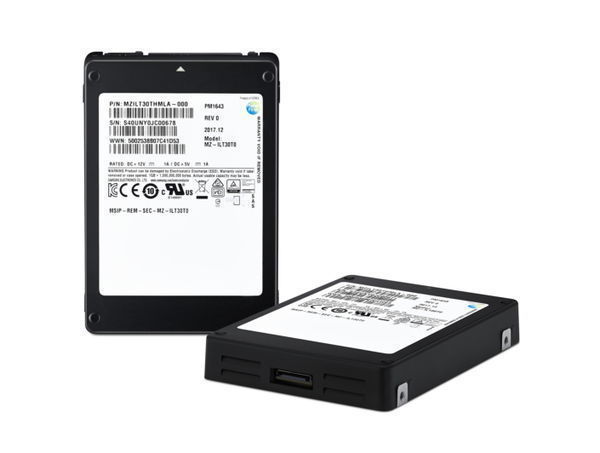
Samsung Electronics Begins Mass Production of Industry's Largest Capacity SSD - 30.72TB - for Next-Generation Enterprise Systems
"New 'PM1643' is built on latest 512Gb V-NAND to offer the most advanced storage, featuring industry-first 1TB NAND flash package, 40GB of DRAM, new controller and custom software Samsung Electronics, the world leader in advanced memory technology, today announced that it has begun mass producing the industry’s largest capacity Serial Attached SCSI (SAS) solid state drive (SSD) – the PM1643 – for use in next-generation enterprise storage systems. Leveraging Samsung’s latest V-NAND technology with 64-layer, 3-bit 512-gigabit (Gb) chips, the 30.72 terabyte (TB) drive delivers twice the capacity and performance of the previous 15.36TB high-capacity lineup introduced in March 2016. This breakthrough was made possible by combining 32 of the new 1TB NAND flash packages, each comprised of 16 stacked layers of 512Gb V-NAND chips. These super-dense 1TB packages allow for approximately 5,700 5-gigabyte (GB), full HD movie files to be stored within a mere 2.5-inch storage device. In addition to the doubled capacity, performance levels have risen significantly and are nearly twice that of Samsung’s previous generation high-capacity SAS SSD. Based on a 12Gb/s SAS interface, the new PM1643 drive features random read and write speeds of up to 400,000 IOPS and 50,000 IOPS, and sequential read and write speeds of up to 2,100MB/s and 1,700 MB/s, respectively." [...]

AMD Launches EPYC Embedded and Ryzen Embedded Processors for End-to-End "Zen" Experiences from the Core to the Edge
"AMD today introduced two new product families – the AMD EPYC™ Embedded 3000 processor and AMD Ryzen™ Embedded V1000 processor – to enter a new age for high-performance embedded processors. AMD EPYC Embedded 3000 brings the power of "Zen" to a variety of new markets including networking, storage and edge computing devices, while AMD Ryzen Embedded V1000 targets medical imaging, industrial systems, digital gaming and thin clients. These new AMD Embedded processors deliver breakthrough performance, exceptional integration and on-chip security. "Today we extend the high-performance x86 'Zen' architecture from PCs, laptops and the datacenter to networking, storage and industrial solutions with the AMD EPYC Embedded and AMD Ryzen Embedded product families, delivering transformative performance from the core to the edge," said Scott Aylor, corporate vice president and general manager, Datacenter and Embedded Solutions Business Group, AMD. "AMD EPYC Embedded 3000 raises the bar in performance for next-generation network functions virtualization, software-defined networking and networked storage applications. AMD Ryzen Embedded V1000 brings together the 'Zen' core architecture and 'Vega' graphics architecture to deliver brilliant graphics in a single chip that provides space and power savings for medical imaging, gaming and industrial systems." [...]

LoRa World Record: 71,572km to Space and Back
"What you see below is a an honest-to-goodness LoRa carrier that is being received at 11.9024 GHz from SES-2. The total round trip distance from the uplink facility to our 2-cm antenna in Chicago is about 71,572km. Of course, it's not fair to compare our accomplishments with the exceptional work of Andreas Spiess or the Koppelting project, which both used unmodified LoRa radios for transmitting incredibly long terrestrial distances. Our link budget had a solid bit of help from a 5-meter uplink antenna and 90W amplifier on the satellite. Unlike normal Ku-band satellite terminals, we were using antennas less than a few centimeters across (a cheap, standard LNB with no dish, as well as a custom-made patch antenna/LNB combo; pictures below). " [...]
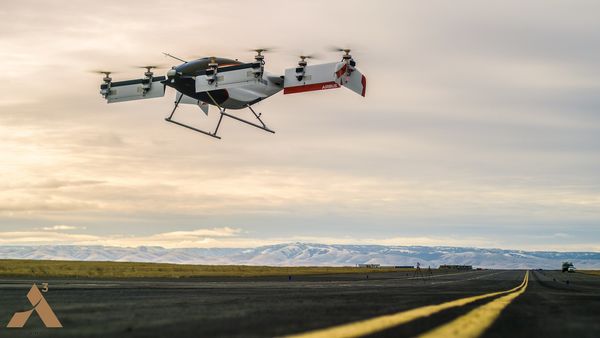
Vahana, the Self-Piloted, eVTOL aircraft from A3 by Airbus, Successfully Completes First Full-Scale Test Flight
"Vahana, the all electric, self-piloted, VTOL aircraft from A³ by Airbus, today announced the successful completion of its first full-scale flight test, reaching a height of 5 meters (16 feet) before descending safely. The test was completed at 8:52AM Pacific on January 31, 2018 at the Pendleton UAS Range in Pendleton, Oregon. Its first flight, with a duration of 53 seconds, was fully self-piloted and the vehicle completed a second flight the following day. “Today we are celebrating a great accomplishment in aerospace innovation,” said Zach Lovering, Project Executive of Vahana. “In just under two years, Vahana took a concept sketch on a napkin and built a full-scale, self-piloted aircraft that has successfully completed its first flight. Our team is grateful for the support we’ve received from A³ and the extended Airbus family, as well as our partners including MTSI and the Pendleton UAS Range.” Vahana is a project developed at A³, the Silicon Valley outpost of Airbus." [...]

STMicroelectronics Powers Next-Generation IoT Devices with Higher-Performing Multiprotocol Bluetooth & 802.15.4 System-on-Chip
"Powering the next generation of smart connected objects like digital-home products, wearable electronics, smart lighting, and smart sensors, STMicroelectronics (NYSE: STM), a global semiconductor leader serving customers across the spectrum of electronics applications, has revealed an advanced dual-processor wireless chip that supports new features and enhanced performance with extended battery life to deliver an improved end-user experience. The new STM32WB wireless System-on-Chip (SoC) devices combine a fully-featured Arm® Cortex®-M4-based microcontroller to run the main application as well as an Arm Cortex-M0+ core to offload the main processor and offer real time operation on the Bluetooth Low Energy (BLE) 5 and IEEE 802.15.4 radio. The radio can also run other wireless protocols concurrently, including OpenThread, ZigBee®, or proprietary protocols, giving even more options for connecting devices to the Internet of Things (IoT). Today, only a few manufacturers offer similar dual-processor wireless chips capable of managing the user application and the radio separately for optimum performance, and with such large memory size. Alternatives typically utilize entry-level Arm Cortex-M industry-standard cores, which introduce architecture limitations. Combining the higher-performing Cortex-M4 with a Cortex-M0+ for network processing, the STM32WB leverages ST’s ultra-low-power MCU (microcontroller) technologies to combine superior RF performance for longer battery life." [...]
Ciência e Tecnologia

Today`s Highest Quality Composite-Piezoelectric Developed at NUST MISIS
"NUST MISIS scientists jointly with an international group of scientists have managed to develop a composite material that has the best piezoelectric properties today. The research results were published in Scientific Reports journal. Piezoelectrics are one of the worlds most amazing materials. It is possible to literally squeeze electricity from them. That is, an electric charge appears at the time of the materials compression (or stretching). This is called the piezoelectric effect." [...]
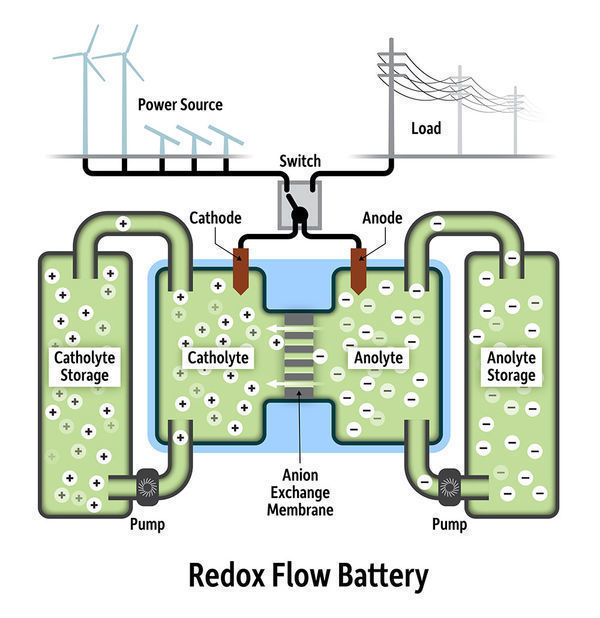
Chemical cluster could transform energy storage for large electrical grids
"The compound’s promising electroactive properties make it an ideal candidate material for redox flow batteries To power entire communities with clean energy, such as solar and wind power, a reliable backup storage system is needed to provide energy when the wind isn’t blowing and the sun isn’t out. One possibility is to use any excess solar- and wind-based energy to charge solutions of chemicals that can subsequently be stored for use when sunshine and wind are scarce. During these down times, chemical solutions of opposite charge can be pumped across solid electrodes, thus creating an electron exchange that provides power to the electrical grid. The key to this technology, called a redox flow battery, is finding chemicals that can not only “carry” sufficient charge, but also be stored without degrading for long periods, thereby maximizing power generation and minimizing the costs of replenishing the system. Researchers at the University of Rochester and University at Buffalo believe they have found a promising compound that could transform the energy storage landscape. In a paper published in Chemical Science, an open access journal of the Royal Society of Chemistry, the researchers describe modifying a metal-oxide cluster, which has promising electroactive properties, so that it is nearly twice as effective as the unmodified cluster for electrochemical energy storage in a redox flow battery." [...]

Quantum for All
"Through a Cottrell Scholar Award, Nathaniel Craig will formalize a learning assistants’ program in a key upper-division physics course The wisdom of experience goes a long way. That may hold especially true in complex topics such as quantum mechanics. When studying the science that explores properties of molecules, atoms and their constituents — electrons, protons and neutrons — along with other, more esoteric particles, any leg up is welcome. Soon, UC Santa Barbara physics majors interested in quantum mechanics will get exactly that. Next fall, an introductory course in the subject will feature learning assistants — undergraduates who have already taken the class and have been trained to help their peers navigate it. Adopting a model introduced at the University of Colorado Boulder in 2006, UCSB assistant physics professor Nathaniel Craig will refine what he and his colleagues have learned over the past few years." [...]
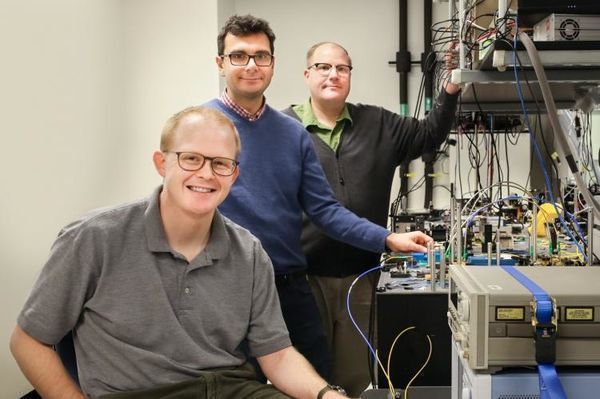
Researchers demonstrate promising method for improving quantum information processing
"A team of researchers led by the Department of Energy’s Oak Ridge National Laboratory has demonstrated a new method for splitting light beams into their frequency modes. The scientists can then choose the frequencies they want to work with and encode photons with quantum information. Their work could spur advancements in quantum information processing and distributed quantum computing. The team’s findings were published in Physical Review Letters. The frequency of light determines its color. When the frequencies are separated, as in a rainbow, each color photon can be encoded with quantum information, delivered in units known as qubits." [...]
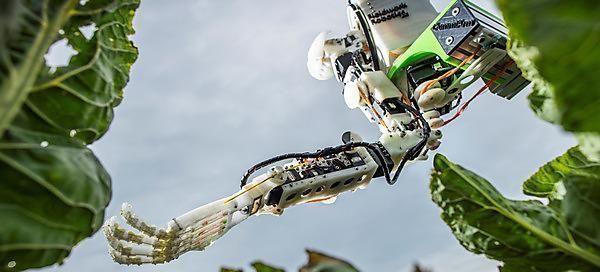
Scientists develop harvesting robots that could revolutionise farming practices
"Scientists at the University of Plymouth are developing ground-breaking technology which could assist fruit and vegetable growers with the challenges they face in harvesting crops. Increasing demand for home grown produce, coupled with concern about workforce shortages in the wake of Brexit, are leaving farmers across the UK facing a unique set of pressures. To try and overcome this, researchers are working with producers in Cornwall to create robots which can work alongside existing workforces and ensure any gaps in productivity are filled. The Automated Brassica harvesting in Cornwall (ABC) project is being led by Lecturer in Robotics Dr Martin Stoelen, with key agricultural expertise provided by Professor of Plant Physiology Mick Fuller. It also involves strategic partner Teagle Machinery Ltd in Truro, and partners Riviera Produce in Hayle and CNC Design Ltd in St Columb Major. It has secured funding from Agri-Tech Cornwall, a three-year, £10million initiative part-funded by the European Regional Development Fund, with match-funding from Cornwall Council." [...]

AI2-THOR Interactive Simulation Teaches AI About Real World
"AI2-THOR, an interactive simulation based on home environments, can prepare AI for real-world challenges Training a robot butler to make the perfect omlette could require breaking a lot of eggs and throwing out many imperfect attempts in a real-life kitchen. That’s why researchers have been rolling out virtual training grounds as a more efficient alternative to putting AI agents through costly and time-consuming experiments in the real world. Virtual environments could prove especially useful in training the most popular AI based on machine learning algorithms that often require thousands of trial-and-error runs to learn new skills. Companies such as Waymo have already built their own internal simulators with virtual roads and traffic intersections to train their AI to safely take the wheel of self-driving cars. But a new, open-source virtual training ground called AI2-THOR enables AI agents to learn how to interact with objects in familiar home settings such as kitchens and bedrooms. “These trials in the real world might damage the objects that the robots interact with or even the robot itself,” says Roozbeh Mottaghi, a research scientist in the computer vision team at the Allen Institute for Artificial Intelligence in Seattle." [...]
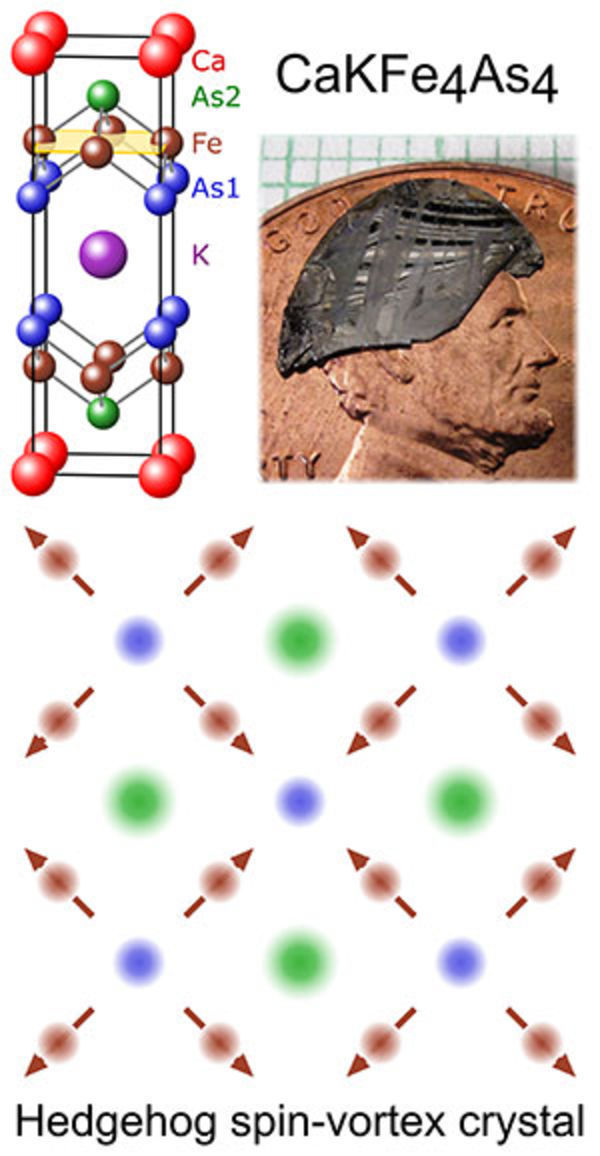
Missing link to novel superconductivity revealed at Ames Laboratory
"Scientists at the U.S. Department of Energy’s Ames Laboratory have discovered a state of magnetism that may be the missing link to understanding the relationship between magnetism and unconventional superconductivity. The research, recently published in npj Nature Quantum Materials, provides tantalizing new possibilities for attaining superconducting states in iron-based materials. “In the research of quantum materials, it’s long been theorized that there are three types of magnetism associated with superconductivity. One type is very commonly found, another type is very limited and only found in rare situations, and this third type was unknown, until our discovery,” said Paul Canfield, a senior scientist at Ames Laboratory and a Distinguished Professor and the Robert Allen Wright Professor of Physics and Astronomy at Iowa State University. The scientists suspected that the material they studied, the iron arsenide CaKFe4As4 , was such a strong superconductor because there was an associated magnetic ordering hiding nearby. Creating a variant of the compound by substituting in cobalt and nickel at precise locations, called “doping,” slightly distorted the atomic arrangements which induced the new magnetic order while retaining its superconducting properties." [...]
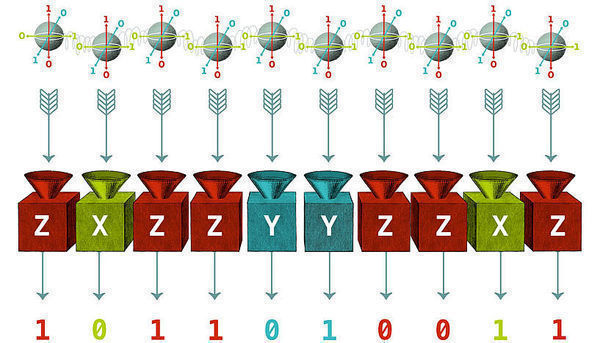
Fingerprints of quantum entanglement
"Quantum entanglement is a key feature of a quantum computer. Yet, how can we verify that a quantum computer indeed incorporates a large-scale entanglement? Using conventional methods is hard since they require a large number of repeated measurements. Aleksandra Dimić from the University of Belgrade and Borivoje Dakić from the Austrian Academy of Sciences and the University of Vienna have developed a novel method where in many cases even a single experimental run suffices to prove the presence of entanglement. Their surprising results will be published in the online open access journal npj Quantum Information of the Nature Publishing group. The ultimate goal of quantum information science is to develop a quantum computer, a fully-fledged controllable device which makes use of the quantum states of subatomic particles to store information." [...]
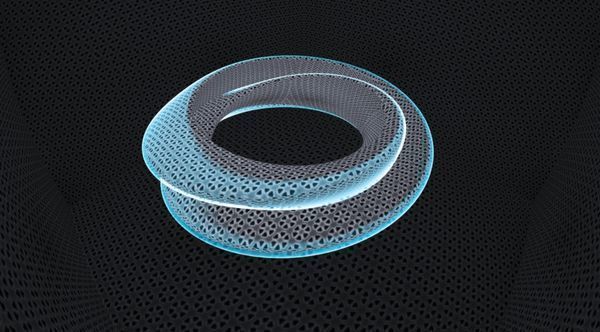
New hole-punched crystal clears a path for quantum light
"Optical highways for light are at the heart of modern communications. But when it comes to guiding individual blips of light called photons, reliable transit is far less common. Now, a collaboration of researchers from the Joint Quantum Institute (JQI), led by JQI Fellows Mohammad Hafezi and Edo Waks, has created a photonic chip that both generates single photons, and steers them around. The device, described in the Feb. 9 issue of Science (link is external), features a way for the quantum light to seamlessly move, unaffected by certain obstacles. "This design incorporates well-known ideas that protect the flow of current in certain electrical devices," says Hafezi. "Here, we create an analogous environment for photons, one that protects the integrity of quantum light, even in the presence of certain defects."" [...]
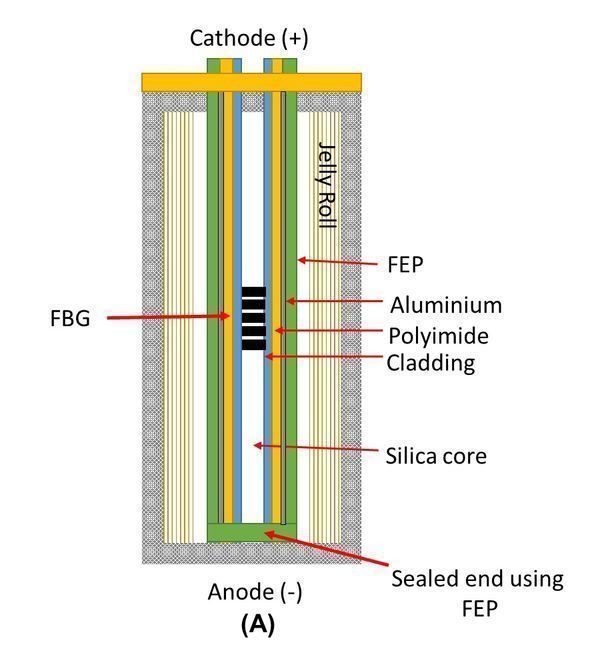
New sensor tech for commercial Lithium-ion batteries finds they can be charged 5 times faster
"Researchers at WMG at the University of Warwick have developed a new direct, precise test of Lithium-ion batteries’ internal temperatures and their electrodes potentials and found that the batteries can be safely charged up to five times faster than the current recommended charging limits. The new technology works in-situ during a battery’s normal operation without impeding its performance and it has been tested on standard commercially available batteries. Such new technology will enable advances in battery materials science, flexible battery charging rates, thermal and electrical engineering of new battery materials/technology and it has the potential to help the design of energy storage systems for high performance applications such as motor racing and grid balancing. If a battery becomes over heated it risks severe damage particularly to its electrolyte and can even lead to dangerous situations where the electrolyte breaks down to form gases than are both flammable and cause significant pressure build up. Overcharging of the anode can lead to so much Lithium electroplating that it forms metallic dendrites and eventually pierce the separator causing an internal short circuit with the cathode and subsequent catastrophic failure. In order to avoid this, manufacturers stipulate a maximum charging rate or intensity for batteries based on what they think are the crucial temperature and potential levels to avoid." [...]
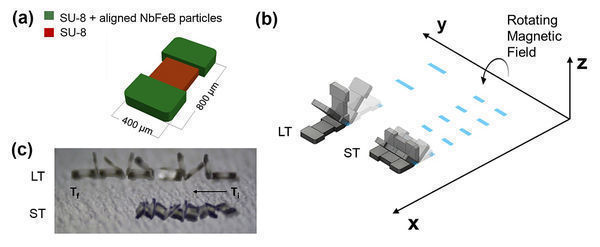
All-terrain microbot moves by tumbling over complex topography
"A new type of all-terrain microbot that moves by tumbling could help usher in tiny machines for various applications. The “microscale magnetic tumbling robot,” or μTUM (microTUM), is about 400 by 800 microns, or millionths of a meter, smaller than the head of a pin. A continuously rotating magnetic field propels the microbot in an end-over-end or sideways tumbling motion, which helps the microbot traverse uneven surfaces such as bumps and trenches, a difficult feat for other forms of motion. “The μTUM is capable of traversing complex terrains in both dry and wet environments,” said David Cappelleri, an associate professor in Purdue University’s School of Mechanical Engineering and director of Purdue’s Multi-Scale Robotics and Automation Lab. Findings are detailed in a research paper published online Feb. 3 in the journal Micromachines. The paper was authored by Purdue graduate student Chenghao Bi; postdoctoral research associate Maria Guix; doctoral student Benjamin V. Johnson; Wuming Jing, an assistant professor of mechanical engineering at Lawrence Technological University; and Cappelleri." [...]
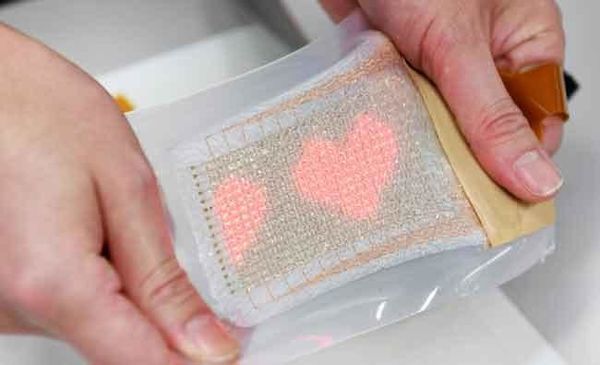
Palmreaders? Japan team builds second skin message display
"Palmreading could take on a whole new meaning thanks to a new invention from Japan: an ultra-thin display and monitor that can be stuck directly to the body. The band-aid-like device is just one millimeter thick and can monitor important health data as well as send and receive messages, including emojis. Takao Someya, the University of Tokyo professor who developed the device, envisions it as a boon for medical professionals with bed-ridden or far-flung patients, as well as family living far from their relatives. “With this, even in home-care settings, you can achieve seamless sharing of medical data with your home doctors, who then would be able to communicate back to their patients,” he told AFP. Slapped onto the palm or back of a hand, it could flash reminders to patients to take their medicine, or even allow far-away grandchildren to communicate with their grandparents. “Place displays on your skin, and you would feel as if it is part of your body." [...]
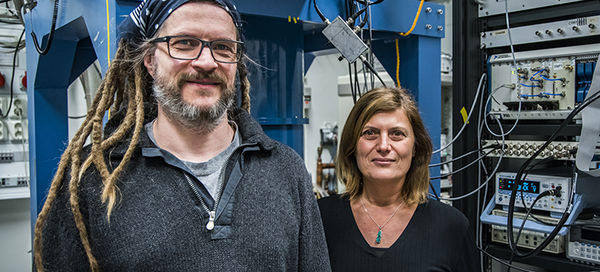
Exciting new technology for quantum computing
"With their insensitivity to decoherence what are known as Majorana particles could become stable building blocks of a quantum computer. The problem is that they only occur under very special circumstances. Now researchers at Chalmers University of Technology have succeeded in manufacturing a component that is able to host the sought-after particles. Researchers throughout the world are struggling to build a quantum computer. One of the great challenges is to overcome the sensitivity of quantum systems to decoherence, collaps of superpositions. One track within quantum computer research is therefore to make use of what are known as Majorana particles, which are also called Majorana fermions." [...]
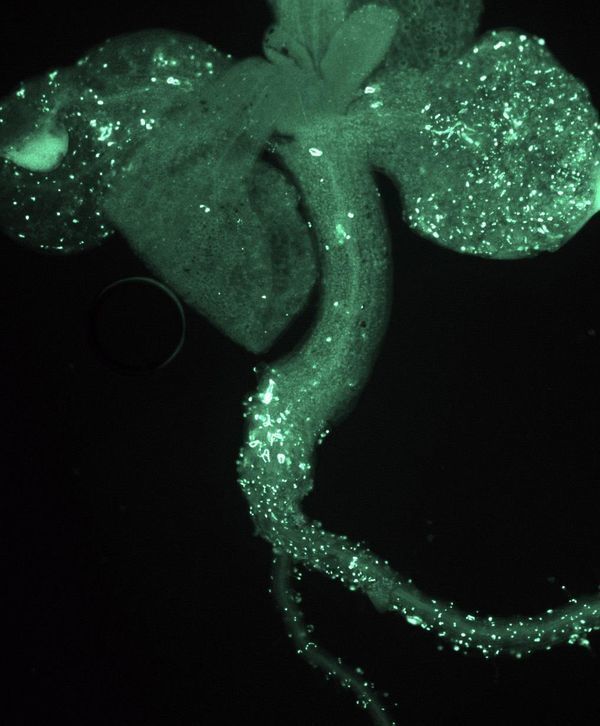
New UMass Amherst, Stanford Research Identifies Plant Cell Wall Sensing Mechanism
"An international collaboration of plant researchers this week reports yet another newly discovered role for the versatile receptor kinase, FERONIA, in the model plant Arabidopsis. The researchers say it acts as a sensor in the plant cell wall to help maintain its integrity and protect the plant from environmental assaults. How cells sense their physical state and compensate for cell wall damage is poorly understood, say authors led by Alice Cheung at the University of Massachusetts Amherst and collaborator José Dinneny from the Carnegie Institute for Science and Stanford University. But their new analysis of plants exposed to salt stress offers the first experimental evidence and molecular mechanisms showing how FERONIA is essential for the cellular responses that ensure survival under high salinity. Details are online now and will be in the March 5 issue of Current Biology. As Cheung explains, “The chemical composition and properties of the cell wall are very complex." [...]

Deep Dive into How Electrons Behave
"Unprecedented characterization of subsurface electronic states could lead to better semiconductors and seeing new interactions. How well a material conducts electricity from a power plant to your home depends in part on how electrons behave. Until now, the conventional method for studying electron energies and momenta couldn’t “see” past the surface. A new method lets scientists observe electronic states deep inside a material. For the first time, scientists can simultaneously measure the momenta and energies of subsurface electronic states in high resolution. These electronic states determine the optical and electrical properties of the material." [...]

System draws power from daily temperature swings
"Technology developed at MIT can harness temperature fluctuations of many kinds to produce electricity. Thermoelectric devices, which can generate power when one side of the device is a different temperature from the other, have been the subject of much research in recent years. Now, a team at MIT has come up with a novel way to convert temperature fluctuations into electrical power. Instead of requiring two different temperature inputs at the same time, the new system takes advantage of the swings in ambient temperature that occur during the day-night cycle. The new system, called a thermal resonator, could enable continuous, years-long operation of remote sensing systems, for example, without requiring other power sources or batteries, the researchers say. The findings are being reported in the journal Nature Communications, in a paper by graduate student Anton Cottrill, Carbon P. Dubbs Professor of Chemical Engineering Michael Strano, and seven others in MIT’s Department of Chemical Engineering." [...]

Wind turbine data from the island of Bornholm confirms potential of high-efficiency electrolysis cells
"Using wind data from a wind farm on the Danish island of Bornholm, researchers from DTU Energy and partners have successfully tested the ability of electrolysis cells to store wind power. An electrolysis cell uses electricity to split, e.g., water molecules (H2O) into hydrogen (H2) and oxygen (O2). In this way, surplus electricity generated by, e.g., wind turbines can be transformed into chemically bound energy in the hydrogen molecules and stored as a gas for later use. In the research project “Towards Solid Oxide Electrolysis Plants in 2020”, funded by the Danish transmission system operator energinet.dk, DTU Energy joined forces with the company Haldor Topsoe A/S, DTU Electrical Engineering and Aalborg University to test state-of-the-art cell and stack designs in a “close-to-lifelike” simulation based on very detailed wind data from a wind farm on the Danish island of Bornholm in the Baltic Sea. “We always talk about the benefits of electrolysis cells to convert surplus energy from renewable energy sources like wind turbines into gas, and now we did so in a real state-of-the-art stack”, says Ming Chen, senior researcher at DTU Energy. The Bornholm distribution system is part of the Nordic interconnected system and fully integrated in the power market "DK2" and it is connected to the Sweden main grid via a sea cable." [...]
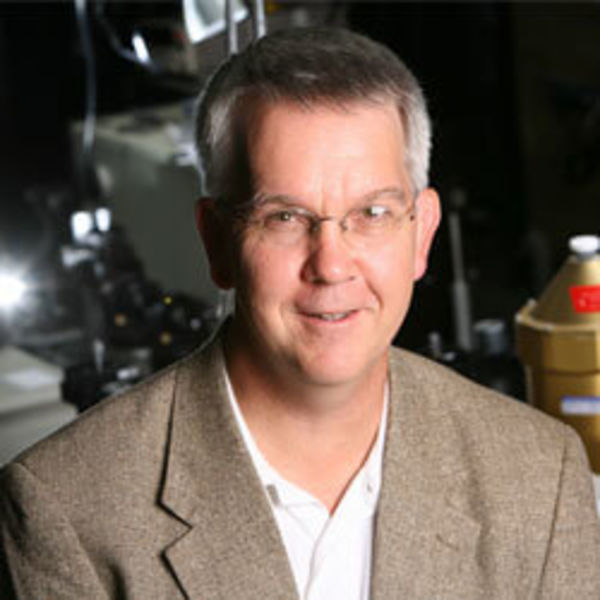
Smallest-scale work in electrochemistry leads to sizable research strides
"At a few billionths of a meter, a nanopore is too tiny to see and too tiny to image easily. These miniscule cavities, when created in synthetic materials, are incredibly powerful. Nanopores have the capacity to detect single-molecules, study single-reaction events, and be used for applications ranging from DNA sequencing to measuring the transfer of individual electrons. Though the fields of nanopore sensing and nanoscale electrochemistry have advanced during the past 30 years, challenges remain. One of Notre Dame’s research groups is among the earliest to investigate electron transfer reactions inside nanopores, and therefore was invited to share their insights in a perspective paper published in ACS Central Science. Kaiyu Fu, a fourth-year graduate student in the Department of Chemistry and Biochemistry, along with Paul W. Bohn, the Arthur J. Schmitt Professor in the Department of Chemical and Biomolecular Engineering and the Department of Chemistry and Biochemistry, wrote “Nanopore Electrochemistry: A Nexus for Molecular Control of Electron Transfer Reactions” for the journal, published by the American Chemical Society." [...]

Stanford researchers develop stretchable, touch-sensitive electronics
"Stanford researchers have set the stage for an evolution in electronics by taking the concept of ‘artificial skin’ to the next level, demonstrating not only a stretchable circuitry that can feel the touch of a ladybug, but a manufacturing process to mass produce this circuitry. Of the many ways that humans make sense of our world – with our eyes, ears, nose and mouth – none is perhaps less appreciated than our tactile and versatile hands. Thanks to our sensitive fingertips, we can feel the heat before we touch the flame, or sense the softness of a newborn’s cheek. But people with prosthetic limbs live in a world without touch. Restoring some semblance of this sensation has been a driving force behind Stanford chemical engineer Zhenan Bao’s decades-long quest to create stretchable, electronically-sensitive synthetic materials. Such a breakthrough could one day serve as skin-like coverings for prosthetics." [...]

Add-on clip turns smartphone into fully operational microscope
"Australian researchers from the ARC Centre of Excellence for Nanoscale BioPhotonics (CNBP) have developed a 3D printable ‘clip-on’ that can turn any smartphone into a fully functional microscope. Reported in the research journal ‘Scientific Reports’, the smartphone microscope is powerful enough to visualise specimens as small as 1/200th of a millimetre, including microscopic organisms, animal and plant cells, blood cells, cell nuclei and more. The clip-on technology is unique in that it requires no external power or light source to work yet offers high-powered microscopic performance in a robust and mobile handheld package. And the researchers are making the technology freely available, sharing the 3D printing files publicly so anyone – from scientists to the scientifically curious – can turn their own smartphones into microscopes. Lead developer and CNBP Research Fellow at RMIT University, Dr Antony Orth (pictured), believes the technology has immense potential as a scientific tool, one that is ideal for use in remote areas and for field-work where larger standalone microscopes are unavailable or impractical. “We’ve designed a simple mobile phone microscope that takes advantage of the integrated illumination available with nearly all smartphone cameras,” says Dr Orth." [...]
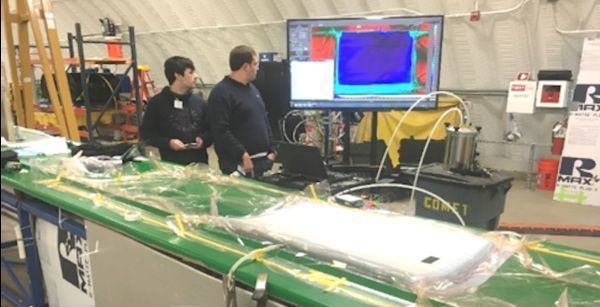
New recyclable resin makes wind turbines much more sustainable
"Fields of spinning wind turbines inspire thoughts of earth-friendly energy, but until now, generating wind power hasn’t been as sustainable as people may have thought. It generally requires a great deal of time and energy to cure the type of resin that makes the 150-foot-wide fiberglass turbines strong and durable. When they finally wear out after 20 or 25 years, very little of the material can be recycled. Doug Adams, Distinguished Professor of Civil and Environmental Engineering and the Daniel F. Flowers Professor, said that made wind turbines an ideal project for the Institute for Advanced Composites Manufacturing Innovation, a consortium of industry, government and academic institutions aimed at improving the composite materials that are manufactured for use in turbines, cars, compressed gas storage tanks and a number of other products like airplanes and sporting goods. “What better application to look at than wind power, where we think about energy and sustainability foremost in our minds? It’s a grand challenge in composites manufacturing,” said Adams, who also chairs Vanderbilt’s Department of Civil and Environmental Engineering." [...]
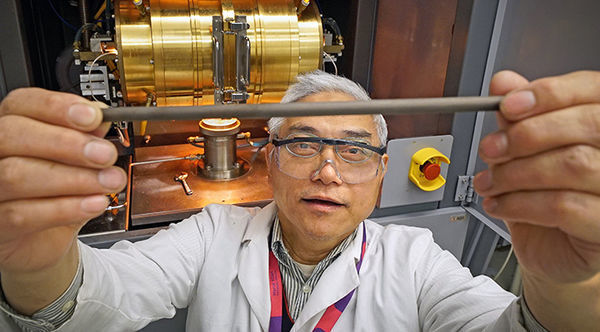
Bringing a Hidden Superconducting State to Light
"High-power light reveals the existence of superconductivity associated with charge "stripes" in the copper-oxygen planes of a layered material above the temperature at which it begins to transmit electricity without resistance. A team of scientists has detected a hidden state of electronic order in a layered material containing lanthanum, barium, copper, and oxygen (LBCO). When cooled to a certain temperature and with certain concentrations of barium, LBCO is known to conduct electricity without resistance, but now there is evidence that a superconducting state actually occurs above this temperature too. It was just a matter of using the right tool—in this case, high-intensity pulses of infrared light—to be able to see it. Reported in a paper published in the Feb. 2 issue of Science, the team’s finding provides further insight into the decades-long mystery of superconductivity in LBCO and similar compounds containing copper and oxygen layers sandwiched between other elements. These “cuprates” become superconducting at relatively higher temperatures than traditional superconductors, which must be frozen to near absolute zero (minus 459 degrees Fahrenheit) before their electrons can flow through them at 100-percent efficiency." [...]
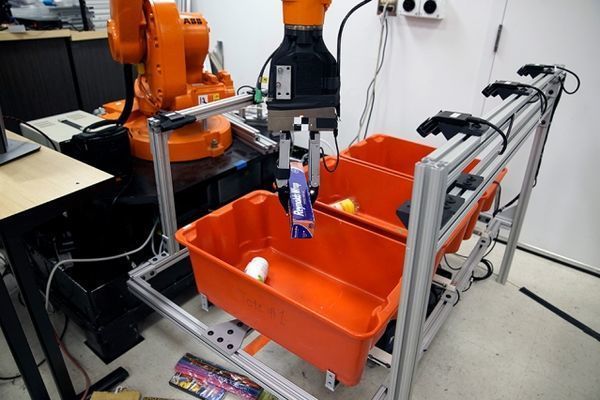
Robo-picker grasps and packs
"New robotic system could lend a hand with warehouse sorting and other picking or clearing tasks. Unpacking groceries is a straightforward albeit tedious task: You reach into a bag, feel around for an item, and pull it out. A quick glance will tell you what the item is and where it should be stored. Now engineers from MIT and Princeton University have developed a robotic system that may one day lend a hand with this household chore, as well as assist in other picking and sorting tasks, from organizing products in a warehouse to clearing debris from a disaster zone. The team’s “pick-and-place” system consists of a standard industrial robotic arm that the researchers outfitted with a custom gripper and suction cup. They developed an “object-agnostic” grasping algorithm that enables the robot to assess a bin of random objects and determine the best way to grip or suction onto an item amid the clutter, without having to know anything about the object before picking it up." [...]
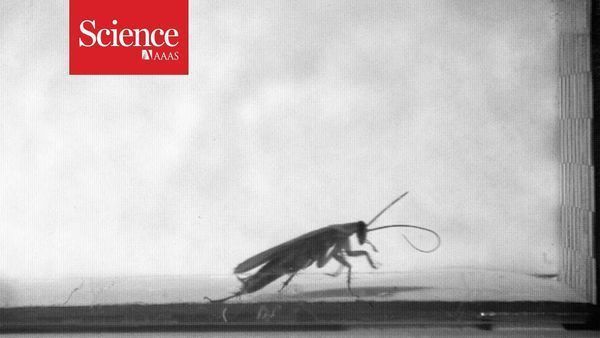
Cockroach-inspired robot is no crash-test dummy
"Some toddlers never seem to learn that if you run too fast you’ll bump your head. Skittering cockroaches bump their heads a lot too, but they’ve learned to embrace it, using the collision energy to propel themselves up and over obstacles. UC Berkeley researchers have taken a lesson from these creepy crawlies and built a robot called DASH that uses the momentum of a head-on crash to tip itself upward to climb a wall. Kaushik Jayaram, who earned his Ph.D. in the UC Berkeley lab of Robert Full, discovered how these rapid running roaches transition up a wall. Inspired by these creatures, Ron Fearing’s engineering team modified a palm-size robot with a soft, roach-like exoskeleton and six legs is named the Dynamic Autonomous Sprawled Hexapod, or DASH. And it has no sensors or onboard-computer to tell it what to do." [...]
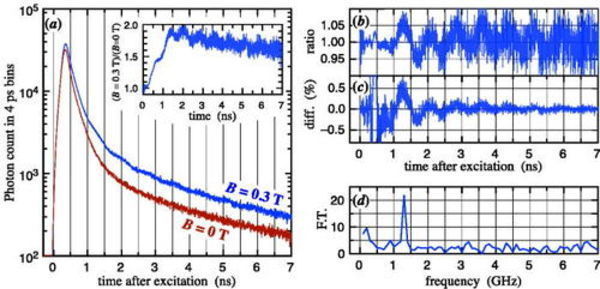
Quantum beats of a multiexciton state in rubrene single crystals
"We observe quantum beats in the nanosecond-scale photoluminescence decay of rubrene single crystals after photoexcitation with short laser pulses in a magnetic field in the range of 0.1 to 0.3 T. The relative amplitude of the quantum beats is of the order of 5%. Their frequency is 1.3 GHz when the magnetic field is oriented parallel to the twofold rotation axis of the rubrene molecules and decreases to 0.6 GHz when the magnetic field is rotated to the crystal's molecular stacking direction. The amplitude of the quantum beats decays alongside the non-oscillatory photoluminescence background, which at low excitation densities has an exponential decay time of 4.0 ± 0.2 ns. We interpret this as the effective lifetime of a multiexciton state that originates from singlet-fission and can undergo geminate recombination back to the singlet state. In larger organic molecules, the first electronic excited state can have a significantly lower energy in a triplet configuration when compared to the photoexcited singlet configuration. As a consequence, a singlet exciton in an organic molecular crystal can efficiently transition to a pair of triplet excitons with a total spin of zero, which can ultimately dissociate into independent, long-lived triplet excitons." [...]

In a First, Tiny Diamond Anvils Trigger Chemical Reactions by Squeezing
"Experiments with 'molecular anvils' mark an important advance for mechanochemistry, which has the potential to make chemistry greener and more precise. Scientists have turned the smallest possible bits of diamond and other super-hard specks into “molecular anvils” that squeeze and twist molecules until chemical bonds break and atoms exchange electrons. These are the first such chemical reactions triggered by mechanical pressure alone, and researchers say the method offers a new way to do chemistry at the molecular level that is greener, more efficient and much more precise. The research was led by scientists from the Department of Energy’s SLAC National Accelerator Laboratory and Stanford University, who reported their findings in Nature today. “Unlike other mechanical techniques, which basically pull molecules until they break apart, we show that pressure from molecular anvils can both break chemical bonds and trigger another type of reaction where electrons move from one atom to another,” said Hao Yan, a physical science research associate at SIMES, the Stanford Institute for Materials and Energy Sciences, and one of the lead authors of the study. “We can use molecular anvils to trigger changes at a specific point in a molecule while protecting the areas we don’t want to change,” he said, “and this creates a lot of new possibilities.” A reaction that’s mechanically driven has the potential to produce entirely different products from the same starting ingredients than one driven the conventional way by heat, light or electrical current, said study co-author Nicholas Melosh, a SIMES investigator and associate professor at SLAC and Stanford." [...]

Testing Quantum Field Theory in a Quantum Simulator
"A new way to characterize many-particle quantum systems has been presented in the journal “Nature” by TU Wien (Vienna) and Heidelberg University. Quantum simulators can now be used to take a deeper look at previously unanswered questions. What happened right after the beginning of the universe? How can we understand the structure of quantum materials? How does the Higgs-Mechanism work? Such fundamental questions can only be answered using quantum field theories." [...]
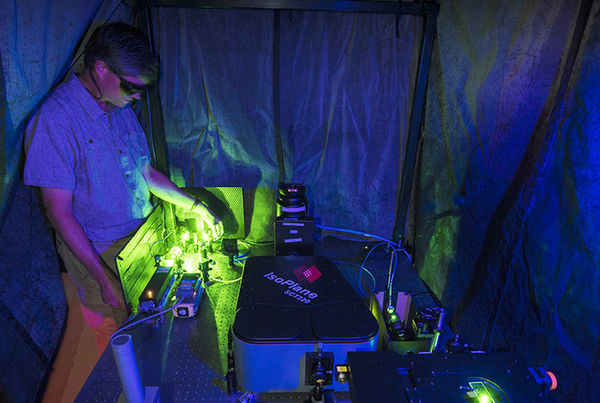
Researchers discover novel exciton interactions in carbon nanotubes
"In the study, a collaborative research team showed that Raman spectroscopy (a form of light scattering) can provide more extensive characterization of intertube excitons. Nanotechnology researchers studying small bundles of carbon nanotubes have discovered an optical signature showing excitons bound to a single nanotube are accompanied by excitons tunneling across closely interacting nanotubes. That quantum tunneling action could impact energy distribution in carbon nanotube networks, with implications for light-emitting films and light harvesting applications. “Observing this behavior in carbon nanotubes suggests there is potential to detect and control a similar response in more complex, multi-layered semiconductor and semiconductor-metal heterostructures,” said Stephen Doorn, of the Center for Integrated Nanotechnologies at Los Alamos and a coauthor of the study, recently published in Nature Communications. Carbon nanotubes are cylinders of graphene with their atoms arranged in hexagons. They are of interest as near-infrared light emitters and nanoscale semiconductor materials for electronics and optoelectronics applications." [...]
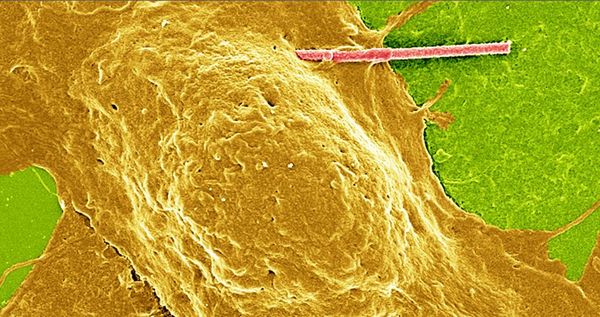
Researchers invent tiny, light-powered wires to modulate brain's electrical signals
"The human brain largely remains a black box: How the network of fast-moving electrical signals turns into thought, movement and disease remains poorly understood. But it is electrical, so it can be hacked—the question is finding a precise, easy way to manipulate electrical signaling between neurons. A new University of Chicago study shows how tiny, light-powered wires could be fashioned out of silicon to provide these electrical signals. Published Feb. 19 in Nature Nanotechnology, the study offers a new avenue to shed light on—and perhaps someday treat—brain disorders. Ten years ago, the science world was alive with speculation about a recently discovered technique called optogenetics, which would manipulate neural activity with light. The problem is that it has to be done with genetics: inserting a gene into a target cell that would make it respond to light." [...]
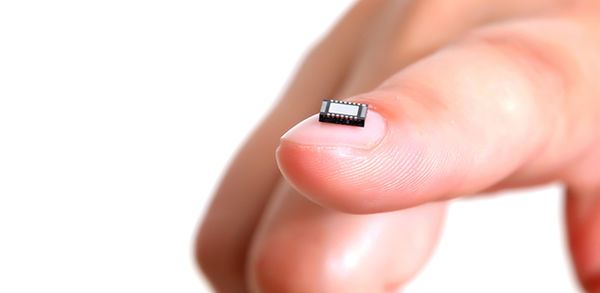
Unprecedented single-digit-nanometer magnetic tunnel junction demonstrated
"A research group from Tohoku University made up of Professor Hideo Ohno, Associate Professor Shunsuke Fukami, Associate Professor Hideo Sato, Assistant Professor Butsurin Jinnai, and Mr. Kyota Watanabe has revealed ultra-small magnetic tunnel junctions (MTJs) down to a single-digit-nanometer scale that have sufficient retention properties and yet can be switched by a current. STT-MRAM (spin-transfer torque-magnetoresistive random access memory) has been intensively developed in recent years and commercialization by Mega fab companies is expected in 2018. The STT-MRAM is capable of replacing existing semiconductor-based working memories due to its excellent capabilities in terms of operation speed and read/write endurance. Moreover, it is nonvolatile, i.e., no power supply is required to retain stored information, making it indispensable for future ultralow-power integrated circuits. MTJs are the heart of STT-MRAM. To continue the journey to increase the performance and capacity of STT-MRAM, it was essential to make the MTJ smaller, while maintaining the capabilities to retain information and be switched by a small current." [...]

Why Polymer Solar Cells Deserve Their Place In the Sun
"Polymer solar cells may lag behind traditional silicon solar cells in longevity and efficiency, but could ultimately power autonomous remote sensors and wearable technology. From the Journal: Journal of Renewable and Sustainable Energy Unlike traditional silicon solar cells, organic polymer solar cells (PSCs) may never cover the hillsides of a megawatt solar farm. But, these lightweight, flexible cells show potential to provide solar power to remote microwatt sensors, wearable technology and the Wi-Fi-connected appliances constituting the “internet of things.” PSCs use organic polymers to absorb light and convert it to electricity. While PSCs cannot match the durability or efficiency of inorganic solar cells, the potential to mass-produce nontoxic, disposable solar panels using roll-to-roll production makes them attractive for additional applications. In a paper published this week in the Journal of Renewable and Sustainable Energy, from AIP Publishing, Paul Berger and Minjae Kim of Ohio State University review the latest advances and remaining challenges in PSC technology. Research into PSCs has grown rapidly over the last two decades, generating increasing numbers of publications and patents." [...]
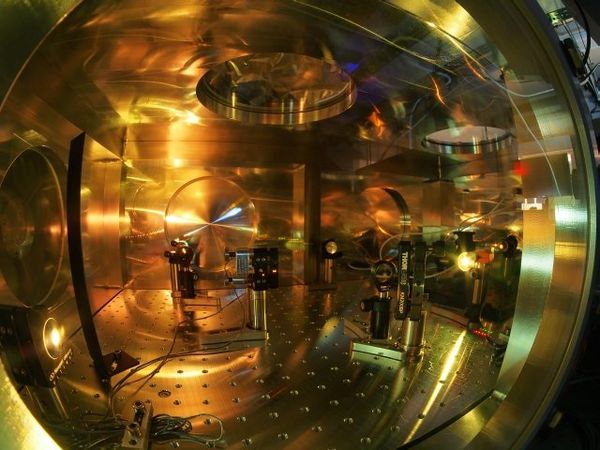
A quadrillionth of a second in slow motion
"Many chemical processes run so fast that they are only roughly understood. To clarify these processes, a team from the Technical University of Munich (TUM) has now developed a methodology with a resolution of quintillionths of a second. The new technology stands to help better understand processes like photosynthesis and develop faster computer chips. An important intermediary step in many chemical processes is ionization. A typical example of this is photosynthesis. The reactions run extremely fast." [...]
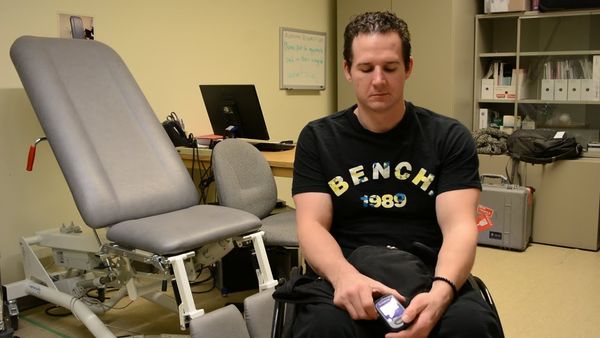
Electrical implant could improve daily activities for people with spinal cord injuries: study
"An experimental treatment that sends electrical currents through the spinal cord has improved “invisible” yet debilitating side effects for a B.C. man with a spinal cord injury. A diving accident six years ago left Isaac Darrel, of Langley, British Columbia, with a spinal cord injury. Side effects of the injury include dizziness, fluctuations in blood pressure and changes in bladder and bowel function. Darrel made the decision to have electrodes surgically implanted over his spinal cord in 2016 to test out a treatment known as epidural stimulation in the hopes of improving some of the side effects. A case study about his experiences was published today in JAMA Neurology." [...]
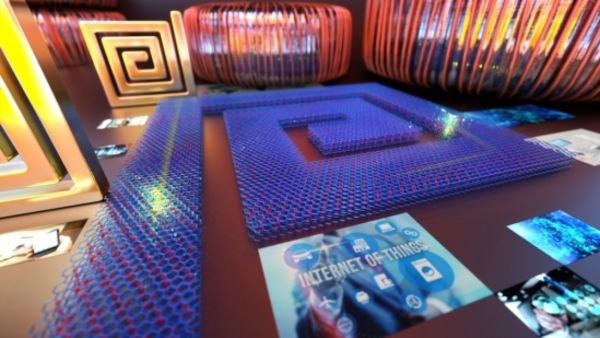
Reinventing the Inductor
"A new materials-based approach by Kaustav Banerjee yields a smaller, higher-performing alternative to the classic design A basic building block of modern technology, inductors are everywhere: cellphones, laptops, radios, televisions, cars. And surprisingly, they are essentially the same today as in 1831, when they were first created by English scientist Michael Faraday. The particularly large size of inductors made according to Faraday’s design are a limiting factor in delivering the miniaturized devices that will help realize the potential of the Internet of Things, which promises to connect people to some 50 billion objects by 2020. That lofty goal is expected to have an estimated economic impact between $2.7 and $6.2 trillion annually by 2025. Now, a team at UC Santa Barbara, led by Kaustav Banerjee, a professor in the Department of Electrical and Computer Engineering, has taken a materials-based approach to reinventing this fundamental component of modern electronics. The findings appear in the journal Nature Electronics." [...]

Splitting crystals for 2D metallic conductivity
"Adding oxygen atoms to a perovskite-like crystal material splits it into layers, giving it unique electrical properties. Sheets of electrons that are highly mobile in only two dimensions, known as 2D electron gas, have unique properties that can be leveraged for faster and novel electronic devices. Researchers have been exploring 2D electron gas, which was only discovered in 2004, to see how it can be used in superconductors, actuators, and electronic memory devices, among others. Researchers at Japan's Tohoku University, with an international team of colleagues, recently identified the atomic structure of a group of perovskite-related materials showing interesting 2D conductive properties. The materials are made of strontium, niobium and oxygen atoms, with a layered structure derived from perovskite. These strontium niobate compounds show promise for developing advanced electronics because of their 'quasi-one-dimensional' metallic conductivity." [...]
Modelos 3D
Com a disponibilidade de ferramentas que permitem dar azo a nossa imaginação na criação de peças 3D e espaços como o thingiverse para as publicar, esta rubrica apresenta alguns modelos selecionados que poderão ser úteis.
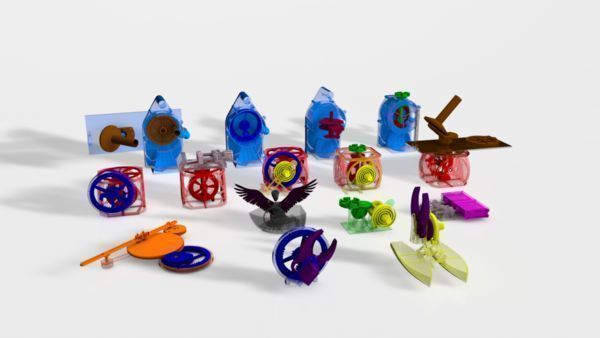
grafter: remixing 3D printed machines
"grafter is a software system that allows users to remix 3D printed machines. It does so by extracting mechanisms from existing machines in a semi-automatic fashion and using these as building bricks to create new machines with. This allows users to re-use the knowledge and engineering experience that went into modelling the original mechanisms and moreover saves the effort of tweaking and testing the mechanism until it works. the test tube centrifuge below was not modelled by the authors, but remixed using grafter from the three source models shown in (a). From each of these models the relevant mechanisms are extracted and recombined. The blue thing used to be a siren (thingiverse link), its large gear ratio is exploited to create very fast spinning." [...]
Documentação
A documentação é parte essencial do processo de aprendizagem e a Internet além de artigos interessantes de explorar também tem alguma documentação em formato PDF interessante de ler. Todos os links aqui apresentados são para conteúdo disponibilizado livremente pelo editor do livro.

The MagPI 67
"Discover the joys of Retro Computing and turn your Raspberry Pi into a C64, Amiga, BBC Micro, or any number of classic computers. And learn how to put a Raspberry Pi inside an old Sinclair Spectrum for the ultimate retro-modern machine. All in this month’s edition of The MagPi. All this inside The MagPi #67 - Retro Computing. Rediscover classic computers with Raspberry Pi - Pi Security. Use Tor and Pi Hole to protect yourself online - Build a Geiger counter." [...]
Projetos Maker
Diversos Projetos interessantes.
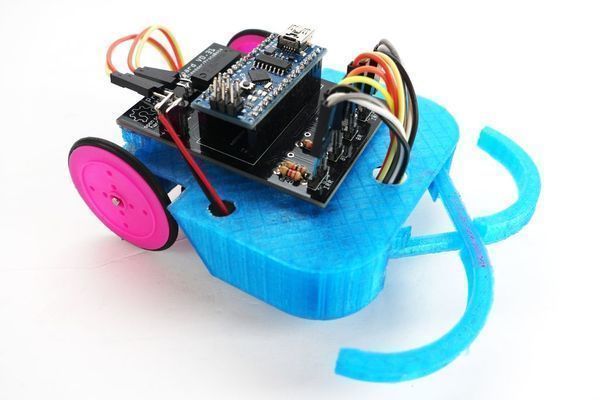
The Protobot Project
"A ROBOT PLATFORM THAT’S Simple and easy to use With a total of 2 motors, and 4 sensors, the ProtoBot is a very simple robot. Don’t let it fool you, though! You can still do a lot with it, especially with programming. It’s also very easy to build. In our experience, a middle schooler can build one in a few hours, including soldering the board. Low Cost and Accessible Using cheap, common components, the ProtoBot is easily sourced online." [...]
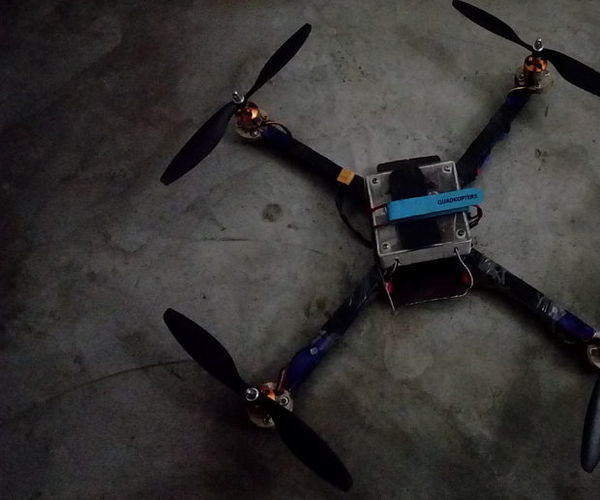
How To Make A Drone Using Arduino | Make A Quadcopter
"A Drone is a very expensive gadget(product) to buy. In this post I am going to discuss, how I make it at cheap?? And How can you make your own like this at cheap priceWell in India all the materials(motors, ESCs etc.) are very expensive(at least for me). So I decided to make it on, as cheapest as possible. The frame and the Flight Controller is DIY." [...]
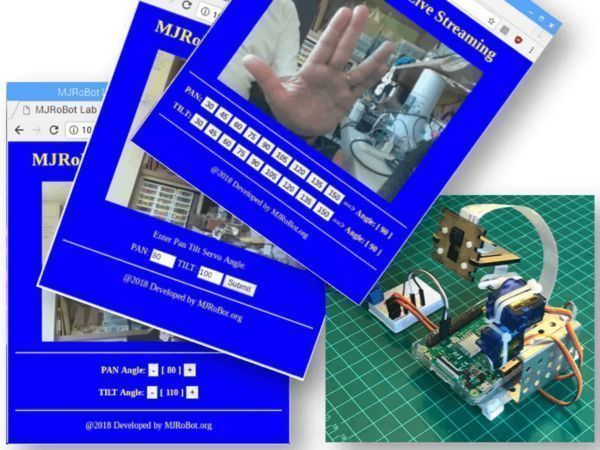
Raspberry Pi Cam Pan-Tilt Control Over Local Internet
"Pan-Tilt Camera position Control over local internet, using Flask and Python. On previous tutorials we explored: How to stream to the internet a video captured by a camera: VIDEO STREAMING WEB SERVER and, How to position a camera (or anything) using: PAN-TILT MULTI SERVO CONTROL In this tutorial, we will combine what we have learned before, controlling our camera position thru internet, as shown in the example" [...]

Cheap Alexa Printer from an Old Receipt Printer
"Upcycle an old receipt printer into a voice assistant/Internet of Things printer! I am a fan of recycling old tech and making it useful again. A while ago, I had acquired an old, cheap thermal receipt printer, and I wanted a useful way to re-purpose it. Then, over the holidays, I was gifted an Amazon Echo Dot, and one of the features I used most was adding groceries to my shopping list. So I thought it'd be cool to use the receipt printer as an IOT printer for Alexa (or Google Home, or Siri, etc) Printing from a Pi The first step is to get the old receipt printer printing again. I chose to use the Raspberry Pi Zero W as the controller because of it's cheap price and small size." [...]

Amazon Alexa / Arduino YUN Smart Home Light Sample
"A sample that uses an Arduino YÚN with an Alexa Smart Home Skill to provide voice control to LED lights. I thought the The Alexa and Arduino Smart Home Challenge was exceptionally cool and wanted to contribute even though I couldn't compete. So, I grabbed an Arduino YÚN that I had available and purchased the absolute cheapest NeoPixel compatible light array and went to work. The sample project uses an Arduino YÚN with an Alexa Smart Home Skill to provide voice control to LED lights. The sample also implements an Amazon Web Services (AWS) IoT thing to represent the state of the light and MQTT to communicate that state with the Arduino YÚN. On the Arduino YÚN, a Python client listens for state changes and communicates those to a running sketch via the Bridge." [...]

Arduino Washer Dryer Alert - Push Notification To Phone With Blynk
"Our washing machine is in the garage and we can't hear the beeps to indicate that the wash is complete. I wanted to find a way to get notified, wherever we are in the house, when the cycle was finished. I've been tinkering with Arduino, ESP8266 WiFi for some time, and recently started with Blynk - I thought this might provide a relatively simple but flexible solution. My initial thoughts were to use the washing machine to power the Arduino, and connect the washing machine buzzer to a digitial input pin to trigger the notification. After a few hours investigating the washing machine controls, without a circuit diagram, and a couple of unexpected electric shocks (even after tesing connections, pins with my multimeter . ." [...]
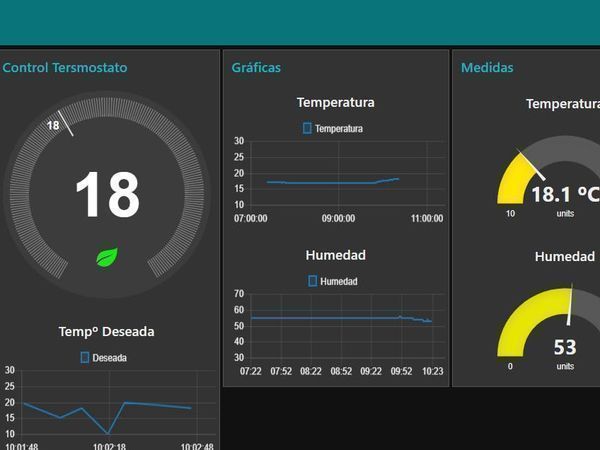
DIY Virtual Alike NEST Thermostat with Node-RED
"Create your own DIY virtual alike NEST thermostat to set and control the temperature of your home wherever you are from your desired device. Hi all! What´s up Makers?! This is my first project I would like to share with Hackster community! :) I created this project because as I work with shifts, it was always a nightmare to setup and configure manually every week my Old-Home-NO-InternetOfThings-device-Thermostat due my shifts does not depends on a regular basis. So I needed a solution which It could let me turn On or Off my Heating system wherever I am, few minutes before coming home and then... save as well some energy efficency at home!" [...]

DIY Homekit enabled lightstrips with Raspberry PI
"We recently took the plunge and got a bunch of HomeKit enabled light switches for our house. After that we got a string of the Hue Lightstrips for pretty multi-colored lights! After looking at the Hue strip, I thought that would be a cool project to build your own version. It also gave me an excuse to play with some NeoPixels which I’ve wanted to play with for a while now. :) FADECANDY I’ve had a couple of Raspberry Pis kicking around looking for a project, so I wanted to try and use that for this project. After spending a bunch of hours cruising around the Adafruit website I came across the FadeCandy board and associated server software." [...]
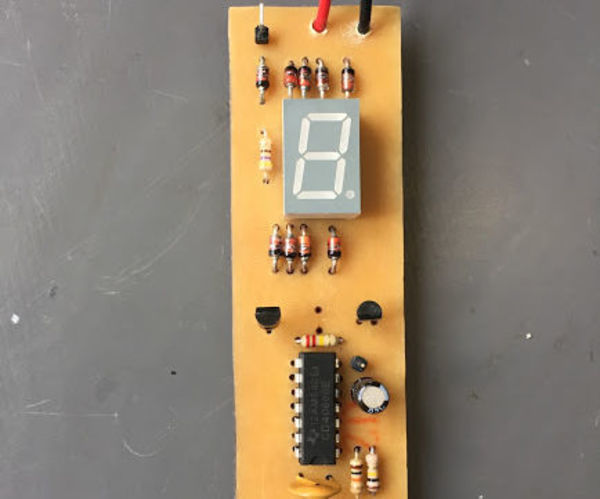
Ttl Logic Level Tester Pen.
"Polarity Tester Pen & TTL Logic Level Tester Pen. This polarity tester pen is slightly different because it is able to test TTL levels and shows the status on a 7 segment display using with the letters: "H" (High) for logic level "1" and "L" (Low) for logic level "0". In this instructables I will show you how to build one. " [...]

An Actuated Desktop Lamp
"Here Ill show how to make a simple, little actuated desktop lamp using arduino and servo motors. Ill also tell you how you can alter the motors so that you can record manipulations and therefore enact movements with the lamp that the lamp can then repeat. With this you can teach your lamp various movements. You will need the following: - Arduino Uno or Yun - 2 x SG-90 Servo motors - 2 buttons (one pushbutton and one rocker toggle button) - a lot of bolds and nuts size M0 - potentiometer (to control the light) The lamp consists of two arms and a head part, all laser cut. You will need to make your own box for the body, I lost the ai file. For the head, I bought another little lamp (the tiny tim https://duckduckgo.com/?q=tiny+tim+little+lamp) and just used the headpart for the LED." [...]

Propagator Thermostat Using ESP8266/NODEMCU And Blynk
"I recently bought a heated propagator, which should help to get my flower and vegetable seeds germinating earlier in the season. It came without a thermostat. And because thermostats are quite expensive, I decided to make my own. As I wanted to use this opportunity to play around a bit with Blynk, I based my thermostat on a ESP8266/NodeMCU development board that I had lying around. For previous projects, I used sites like instructables.com a lot for inspiration and help whenever I got stuck. No more than fair to make a small contribution myself, so here is my first instructable ever!" [...]

Human And Object Following Arduino Robot
"hello guys... we have made a new nice project...object following robot thats based on arduino... this robot is made by using a ultrasonic sensor.... ultrasonic sensor:- An Ultrasonic sensor is a device that can measure the distance to an object by using sound waves. It measures distance by sending out a sound wave at a specific frequency and listening for that sound wave to bounce back. so..this sensor can find object with range and follow or avoid a object and human in specific distance.. so lets start..." [...]

ESP8266/Arduino Smartthings Bearded Dragon Habitat Controller/Monitor
"DaVinci our Dragon was due for a software upgrade to his Vivarium's Controller. I decided to migrate from the good ole traditional 'full on' Arduino logic that has been chugging away quite reliably for the past year, to a ST_Anything SmartThings integration so I could leverage the automation and remote accessibility that environment inherently provides. The cool thing is the fact that the existing design/architecture of DaVinci's ESP8266 ESP12 NodeMCU 0.9 controller was 100% portable to the new ST_Anything with regards to pin mappings, etc...And....OTA is supported which made it even easier since I had implemented that on his existing rig already. Read on to learn how to get started with ST_Anything and see how this project became a great solution for DaVinci's Den. " [...]
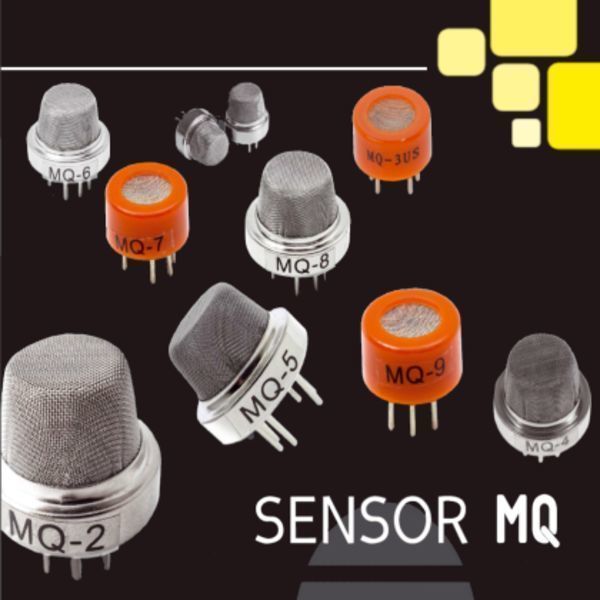
Presenting MQ sensors: low-cost gas and pollution detectors
"Let’s discover a set of low-cost gas and pollution detectors that may be easily accessed from the Arduino World. Detecting and measuring pollution and the main gases (the ones we may come across in our daily life) is always relevant; such operations are carried out by means of specific sensors, that are often very expensive. Luckily, for a while it is possible to find low-cost, reliable sensors for sale: that’s the ones from the MQ series. They are among the most appreciated ones, since they enable – in the different applications – the detection of various kinds of gases, aerosols and particulates (such as smoke and ashes). Moreover, they are very cheap and may be easily acquired, even on the various online stores (which makes them the ones favored by those who like to experiment). Although very popular, they are however not very well documented, and it is therefore not easy to find an online library for Arduino, one that is ready and capable of correlating the signals provided with the concentrations detected in the air." [...]
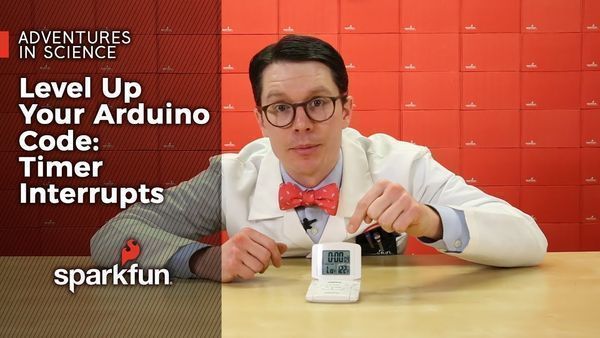
Adventures in Science: Level Up Your Arduino Code With Timer Interrupts
"Previously, we looked at using registers directly in Arduino and setting up external interrupts. This time, we configure a timer interrupt to toggle an LED every 0.5 seconds. That’s right; we’re going to redo blinky the hard way. The ATmega328P has three timers that continually increment. Note that Arduino uses them for various functions, which means you probably don’t want to use those functions if you plan to mess with the timers. On the UNO and RedBoard, you will find: - Timer0 - 8 bits (0 - 255) - Compare Match, Overflow - delay(), millis(), micros(), analogWrite() pins 5, 6 - Timer1 - 16 bits (0 - 65,535) - Compare Match, Overflow - Input Capture - Servo functions, analogWrite() pins 9, 10 - Timer2 - 8 bits (0 - 255) - Compare Match, Overflow - tone(), analogWrite() pins 3, 11 Each of these timers can be configured for one or more interrupts: - Compare Match — When the timer value reaches a specific value (stored in the corresponding output compare register), an interrupt will be generated." [...]

Talking Clock Bilingual (En+Pt)
"The Talking Clock 2 (Bilingual) is the new version of Talking Clock I have published some time ago. The code was updated to support two languages (English/Portuguese) and new features were introduced into the code: Mode 1: Set the time (hour & minute) Mode 2: The clock talks every minute Mode 3: The clock talks every hour Mode 4: The clock speaks the time when a button is pressed Mode 5: Set the language for English or PortugueseNote: The language status is stored in Arduino - EEPROM to keep this information even when it is restarted or turned on. It was introduced as optional a mini amplifier PAM8403 (3W + 3W) for better control of the sound level in the speaker. I am using only one speaker (one sound channel), but you can add another if you want. " [...]
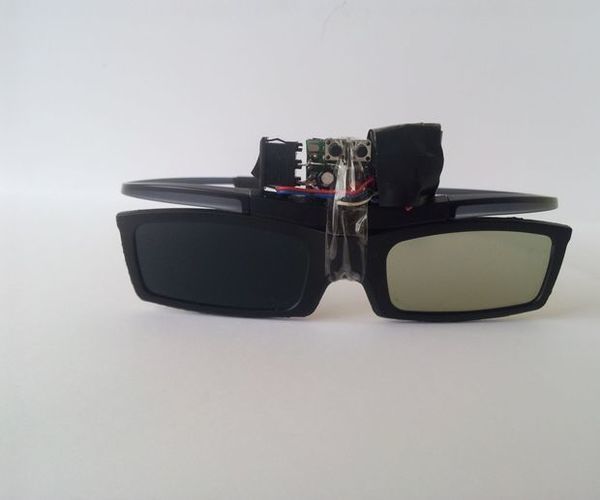
Liquid Crystal Glasses For Amblyopia (Alternating Occlusion Training Glasses)
"Amblyopia (lazy eye), a disorder of sight that affects approximately 3% of population, usually treated by simple eyepatches or atropine drops. Unfortunately, those methods of treatment occlude stronger eye for long, uninterrupted periods of time, not allowing two eyes (actually neurons in the brain that process visual information) to work together and synchronize. Quite recently I found an article on Wikipedia, that details alternative form of treatment, in which liquid crystal panels are placed in front of the eyes and and their occlusions are driven by digital circuitry. Studies in this form of treatment are quite promising, so I decided to upgrade ordinary active shutter glasses from 3D TV to Alternating Occlusion Training Glasses. " [...]
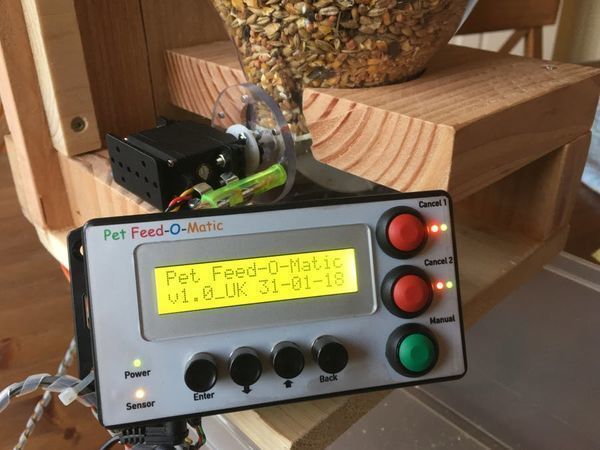
Arduino Uno-Based, Easy-to-Build Pet Feeder
"This is an easy to build pet feeder with 2 timers and accurate portions delivered each time. Why another Pet Feeder? My version of a pet feeder is based on an Arduino microcontroller. The materials used are relatively cheap and I think it's easy to build! Of course there are many version around but I could not find a complete project, ready to build with the features I needed so I started from scratch. These are the features: - *Accurate portions* delivered each time!" [...]
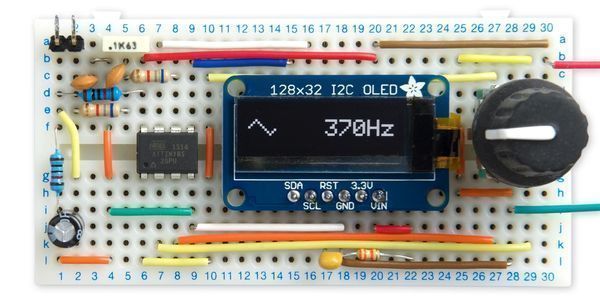
Tiny Function Generator
"This article describes a simple function generator based on an ATtiny85. It can generate triangle, sawtooth, square, and rectangular waves, a pulse train, and noise. The frequency can be adjusted using a rotary encoder between 1Hz and 5kHz in steps of 1Hz, and the selected waveform and frequency is displayed on an OLED display: This project really puts the ATtiny85 through its paces; it's generating 8-bit samples at a 16kHz sampling rate, decoding the rotary encoder, switching between waveforms, and updating the OLED display via I2C. The project is based on my earlier article Waveform Generation using an ATtiny85, and was inspired by a suggestion of Roberto Pangallo. " [...]
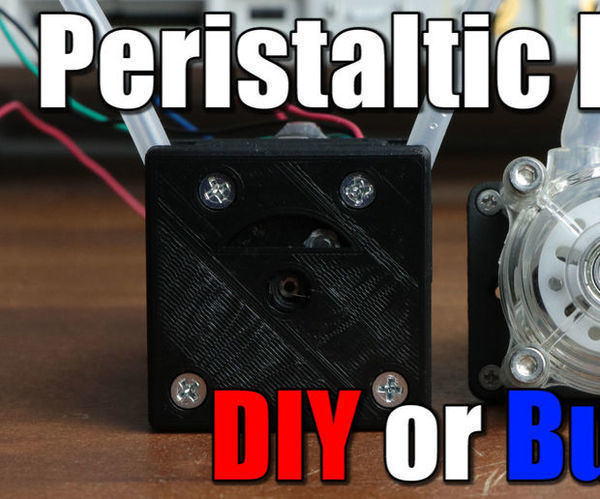
DIY Peristaltic Pump
"In this project we will have a look at peristaltic pumps and find out whether it makes sense to DIY our own version of it or whether we should just stick with the commercial buy option instead. Along the way we will create a stepper motor driver circuit and a suitable 3D print for our DIY version. " [...]
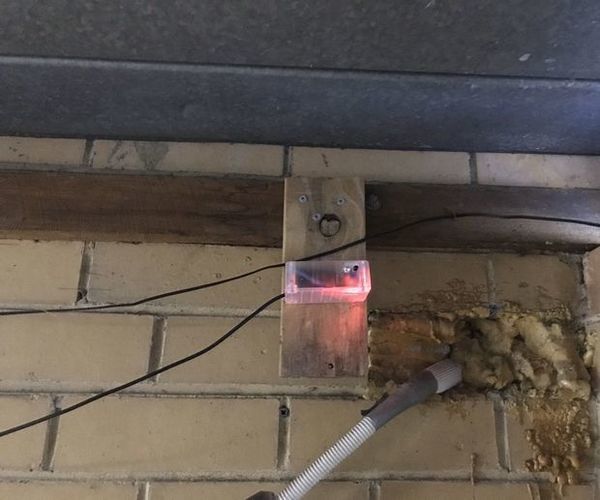
Arduino Garage Door Alarm With Blynk
"Pretty basic sensor that sends data to Blynk project to display the status of my garage door - Open of Shut - and sends a push alert to my phone when the status of the door changes - Open to Shut or Shut to Open. I used WEMOS D1 Mini Pro for wifi connectivity and to run the Arduino sketch, but you could use any Arduino compatible devices. I originally planned on using a simple interlock switch, however the door is an older tilt style garage door and doesnt always open to the same position. Getting a consistant contact would have been difficult. I also rulled out any type of magnetic sensor for the same reason. I settled on a small Infra-Red (IR) sensor that can detect an obstacle in the range 2-30cm." [...]

Nunchuk Controlled Robotic Arm (With Arduino)
"Robotic arms are awesome! Factories all over the world have them, where they paint, solder and carry stuff with precision. They can also be found in space exploration, subsea remote operated vehicles, and even in medical applications! And now you can have a cheaper version of them at your own home, office or lab! Tired of doing a repetitive job? Program your own robot to help you... or to mess things up!" [...]
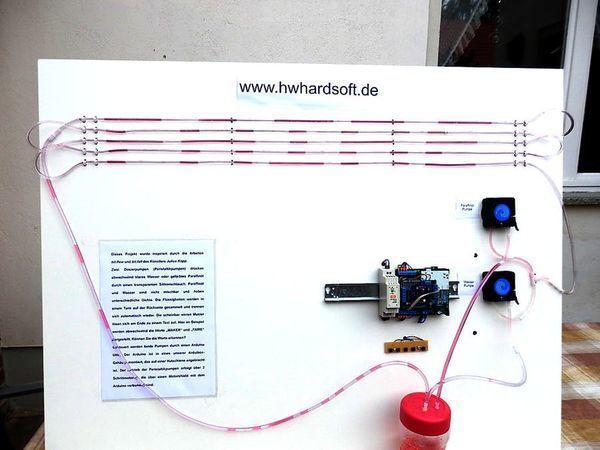
Crazy Arduino Hose Display
"How to make a unique display from a transparent hose and an Arduino UNO. This was a demo project for the Maker Faire Hannover 2016. The project was inspired by the work of the artist Julius Popp. We are using a transparent hose, 2 peristaltic pumps and an Arduino Uno with motor shield to build a simple display. The pumps pressing a pattern of water and red paraffin oil in the hose. In the end a text will be visible." [...]
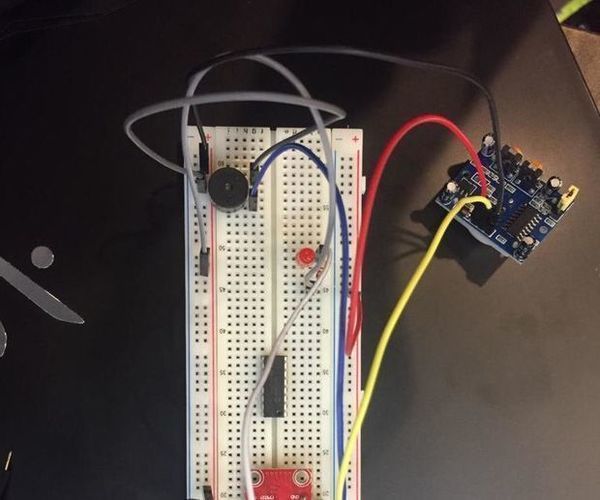
Iot Ca2 - Smart Door
"Description: It is a door locking system for a room.Registered users will be able to use a RFID card to get in, and the lights for the room will turn on. If a wrong RFID card is tapped, the camera will then take a picture, followed by a red led light blinking once. Furthermore, the room has an anti-intrusion feature where an alarm is beeped if motion is detected, when the lights are off. It also has a CCTV function to monitor the room through the web app. " [...]

Minecraft End Portal Infinity Mirror
"In Minecraft, to finish the game you have to fight the final boss (I am not saying what the boss is). To get to the boss you have to go through a portal, That portal is called the end portal! When I saw the end portal I thought to myself "Wouldn't it be cool if it was real." Well, now it is!! With this Minecraft End Portal Infinity Mirror, people will always know you are a fan of Minecraft! " [...]
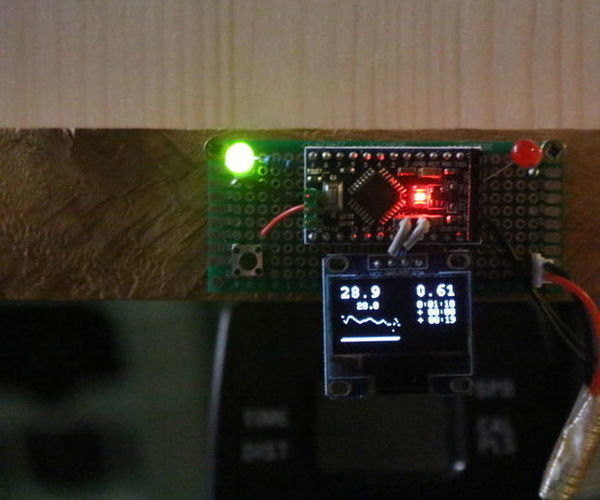
Simple Arduino-Based Ergometer Display With Differential Feedback
"Cardio-workout is boring, particularly so, when exercising indoors. Several existing projects try to alleviate this by doing cool stuff such as coupling the ergometer to a game console, or even simulating a real bicycle ride in VR. Exciting as these are, technically, they don't really help much: Workout is still boring. So, instead, I'd like to be able to just read a book or watch TV while training. But then it's difficult to keep up a steady pace. The idea, here, is to focus on the latter problem, and provide straight-forward feedback, on whether your current level of training is good enough, or you should put in some more effort." [...]
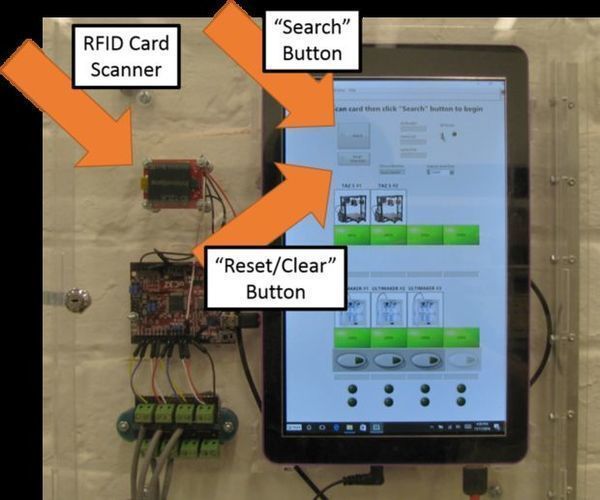
Open Source Machine Access System
"Every makerspace/hackerspace around the world has its own issues to deal with involving use of the machines Insurance policies, waivers, and various forms can only work so well, so this is more tuned to makerspaces that need an extra layer of security, specifically makerspaces located in schools and universities. Safety and Training are the mantras that are continually spouted across school makerspaces, as well they should be. Safety should be the ultimate goal of any school makerspace, and the best way to assure safety is through training. At Tulane University we employ multi-level training procedures for each group of tools as we see fit, but they key question was in a student-run shop, how do we keep un-trained users from just using the tools anyway? Our answer was to develop an RFID tag system that would determine whether a user was properly trained for a machine before granting access to that machine. Specifically, if you hadnt been properly trained for that machine, you wouldnt even be able to turn it on." [...]
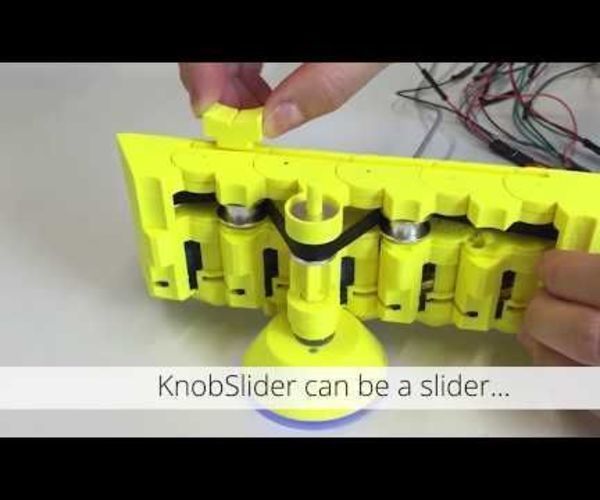
Knobslider: A Shape-Changing Interface For Knob And Slider
"KnobSlider is a shape-changing device that switches between a knob and slider. It enables three different interactions (sliding, clicking, and rotating) on one device. It is originally designed for professional users such as sound engineers who use lots of sliders and dials. KnobSlider aims to bring flexibilities of interfaces while keeping dexterity with physical devices, rather than to use flat touch screens with poor haptic feedback. KnobSlider allows eyes-free, mobile control. This device is presented at CHI 2018 conference." [...]
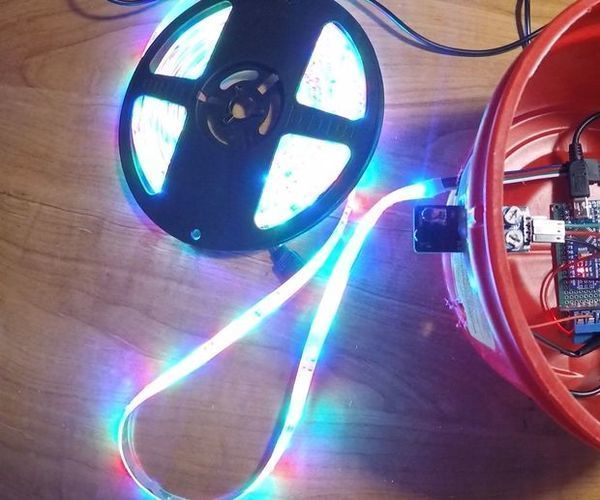
Motion Activated Led Strip
"Goal There are stairs up to where I live and during the winter and at night they can be treacherous. I wanted an easy method to illuminate the stairsimagine your hands are full of grocerieswhile also not having to go back and turn them off. Overview Basically I ran an LED strip down the railing of my stairs. At one end, you walk past an Obstacle Avoidance Sensor (you need to be within <5 inches) which an Arduino Nano listens for and triggers a Relay to turn on the LEDs for 30 seconds. All housed within a coffee container for "decent" weatherproofing. That's it!" [...]

Tiny ESP8266 Dash-Button (Re-Configurable)
"This is a tiny ESP8266 based dash-button. It stays in deep sleep, once you press the button it performs a GET request to the specified URL and if configured also passes the supply voltage as a variable. The best part is that by simply bridging two pins you can make it enter configuration mode. Allowing you to change all the settings without reprogramming. For following along this instructable I am assuming you know some things, like; how to solder, how to follow a schematic and how to upload a program and SPIFFS data to an ESP. " [...]

WiFi to IR interface
"Once again a project realized in the B&B during my free time, far from home. The circuit described here will be capable to drive almost any device that currently uses an IR remote control, by means of WiFi connection, as to say: with your smartphone. This time I want to show all the route from the idea to the running device. I had the idea some years ago (look at my previous articles regarding IR and WiFi), but I completely forgot it until today. When I start a new project, there is the first step that I call: “sofa time”. I spend such time lying down on the sofa, without any computer, pen, document or tool." [...]
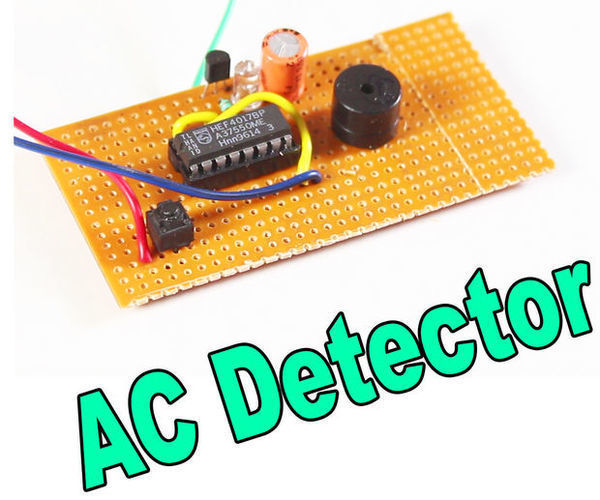
Ac Detector Circuit With Awesome Application
"Hi. Today I am going to show you How To make AC detector. Speaking about AC or alternating currents, it is far more dangerous than DC. It can easily kill you if the voltage is 220v or 110v city power. Before touching any live wire always make sure no high voltage is available there. " [...]
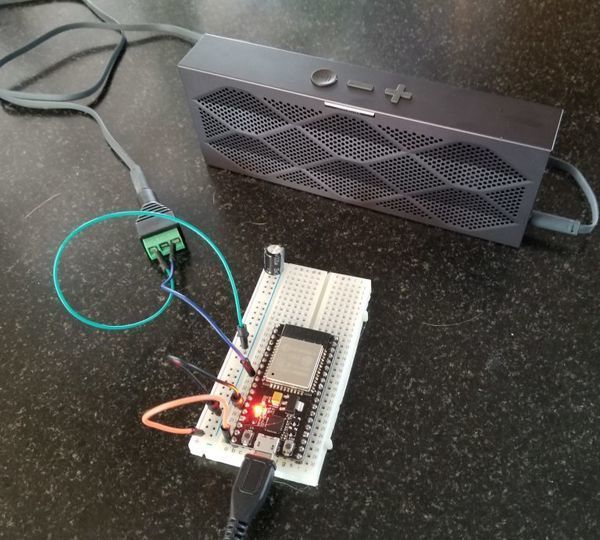
Game Audio for the ESP32
"I have been working on some games for the ESP32 and needed some decent quality audio with a minimum number of additional components. I was bouncing between using the DAC and using the I2S bus. The DAC requires less external parts, so I went that way. I ended up creating a very simple library for use in he Arduino IDE. (Note: This only works with ESP32) DACs The ESP32 has (2) internal 8 bit DACs. DACs are Digital to Analog Converters." [...]

Raspberry Pi - Smart Office
"What is the application about? OfficeHelperBOT is an application targeted towards a smart office setting. 2 Raspberry Pi 3 Model B would be setup for this. Raspberry Pi 1 would be the main machine which will take in all the values from the sensors, publishing the data via MQTT, storing data into cloud database which we are using DynamoDB and running the web portal server. Raspberry Pi 2 would be used at the door. It would require the employee to verify their identity before they are allowed access into the office." [...]
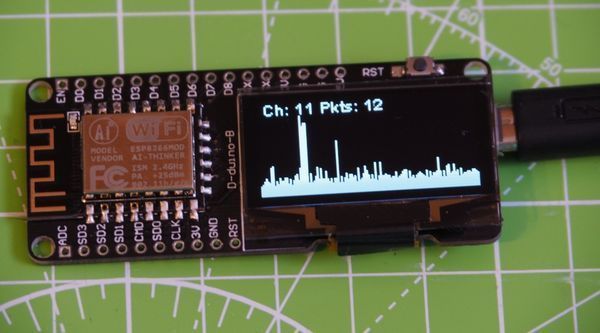
PacketMonitor
"Did you ever wonder how many data packets are flying around you right now?! This little project tells you how many Wi-Fi packets are sent every second and on which channel. It's not limited to one network, it scans all traffic on one channel. " [...]
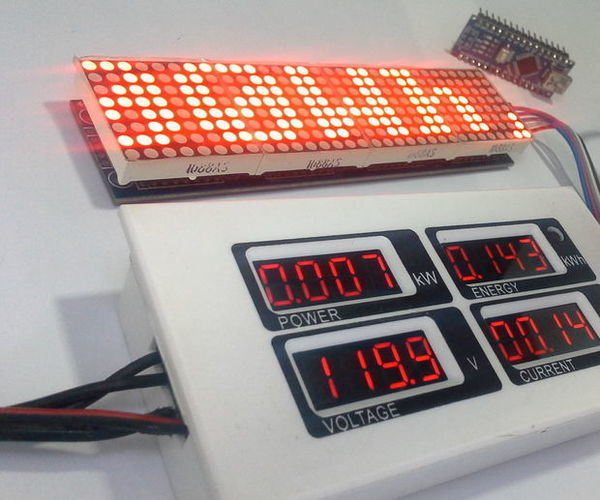
Power Peacefair Pzem 004 + ESP8266 & Arduino Nano
"For some time I wanted to buy a single-phase electricity consumption meter, a few months ago I got Peacefair Reference PZEM-004 meter, its price seemed affordable, it has the advantages of being a non-invasive meter in the electrical circuit and has a communication protocol to request data such as Active Instantaneous Power "kW", Voltage "V", Amperage "A" and Active Power Accumulated "kWh". We will perform some tests on the PZEM-004 Meter and integrate it with 2 platforms or plates already used before the ESP8266 12E module and an Arduino Nano. Warning: Caution is recommended since this project involves electrical risk or electrocucion since 110 VAC -120 VAC connected equipment is used, basic knowledge is required, please be previously documented in this regard. Complete Tutorial- Tutorial CompletoPDAControl Documentation & Downloads and More test Electricity consumption meter Peacefair PZEM 004 + ESP8266 & Arduino Nano http://pdacontrolen.com/electricity-consumption-m..." [...]
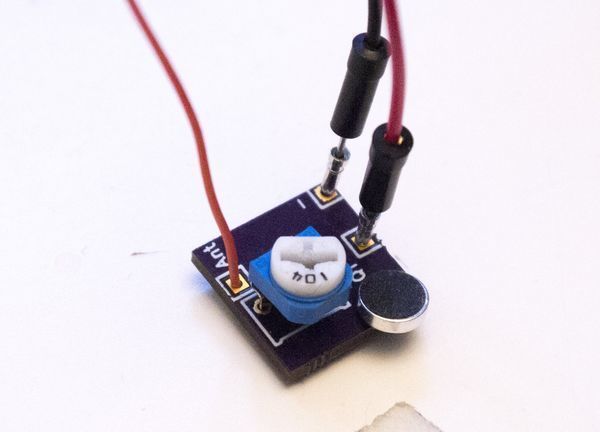
Tiny FM transmitter
"This is a, well, tiny FM transmitter that can have various applications both *probably* legal (pirate radio, your own low-power radio station...) as well as the undoubtedly illegal (FM jammer, spy bug...). The choice is yours! It can run on a voltage between 3 and 13 volts, draws 2-3 milliamps and has a theoretical output power of ~3 milliamps (although you could easily add an RF amplifier). " [...]
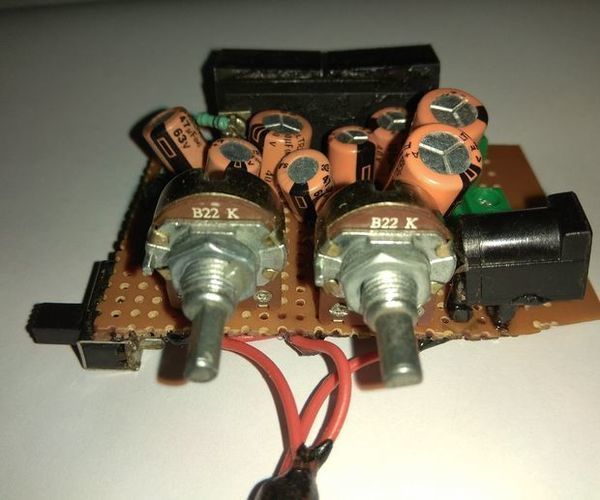
Stereo Amplifier (6W+6W) Using LA4440 Ic
"Amplifiers are much needed for audio amplification. There are many dedicated audio ICs available in the market. They have different wattage ratings, power consumption,mono or stereo,etc.They are available in various packages like DIP,Pentawatt package( Many TDA series IC have this pack), SIP14H pack,etc. Today I will be talking about the LA4440 IC, which has a SIP14H pack. This is a very good and clean stereo amplifier. It can deliver 6W+6W output power, which is enough for your home theater." [...]
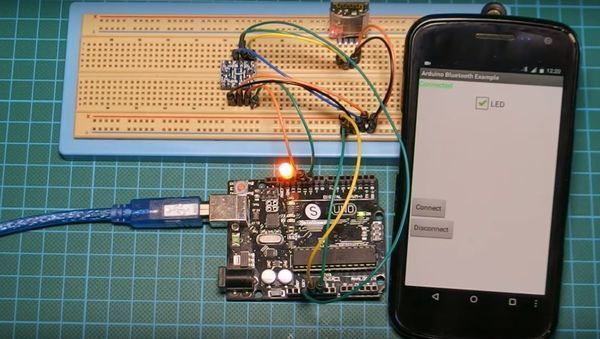
Arduino Communication with an Android App via Bluetooth
"With the arrival of the IoT and the need for control, devices now need to do more than perform the basic functions for which they are built, they need to be capable of communicating with other devices like a mobile phone among others. There are different communication systems which can be adapted for communication between devices, they include systems like WiFi, RF, Bluetooth among several others. Our focus will be on communication over Bluetooth. Today we will be building an Arduino based project which communicates with an app running on a smartphone (Android) via Bluetooth. For simplicity, the goal of the project is to switch a LED connected to the Arduino using the mobile app. We will be using the HC06 Bluetooth module as the major ingredient in this tutorial." [...]
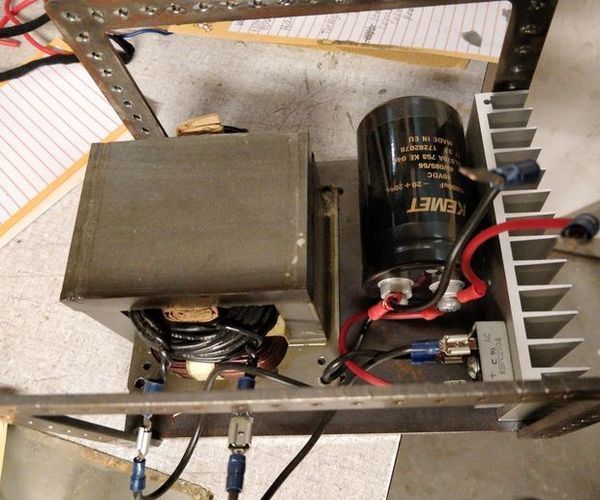
Custom DC Power From Microwave Oven Transformer
"This instructable puts together a few disparate concepts already in circulation. Microwave oven transformers are awesome. But 2000 volts of kill-you are not too useful. Lots of people make welders, but I have not seen much on the way of simple, useful power supplies. This will be a quick overview on how to rewind and make a PSU from a MOT BE CAREFUL WHEN WORKING WITH HIGH VOLTAGE DEVICES AND MAINS VOLTAGE. Make sure you know what you are doing before diving in!!" [...]
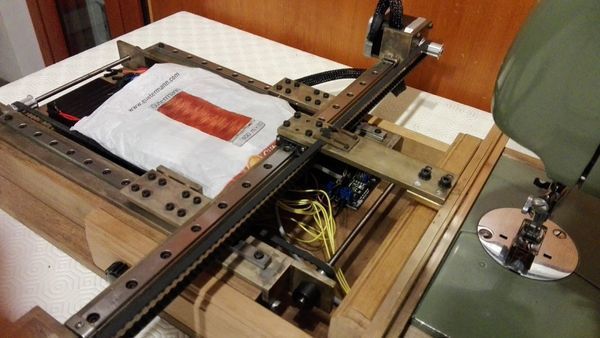
EMBROIDERY CNC: first completed work
"Long time, long journey, started in 2012, a project semi-finished after six years was completed, and it took not more than one week to be operative: CNC Embroidery is now fully working! Speed is still quite limited by torque of little Nema 17 stepper motor at high revolution speed of the flywheel. More or less actually the maximum speed is 200 stitches per minute, while I believe that with a bigger motor (Nema 23 with 430 oz in) I could reach a speed of 800 stitches per minute. " [...]
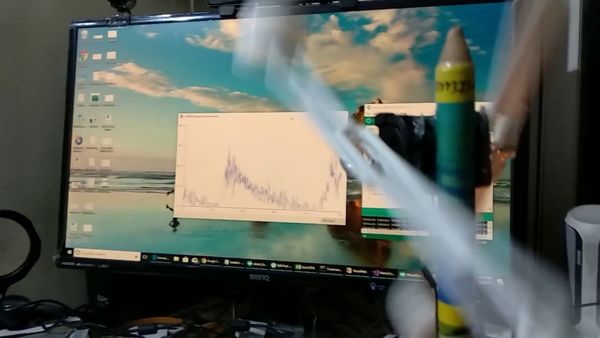
DIY Anemometer: Wind Speed Sensor Device
"Anemometer or a wind speed measuring device is a common weather station instrument. It was costly online, so I built one! Anemometer or a wind speed measuring device is a common weather station instrument. The other day, I was discussing an IoT project with a talented student group. We were running through a bunch of sensors that they can use in their project. In the list we had a wind speed sensor device, however the cost online was near about $80!" [...]
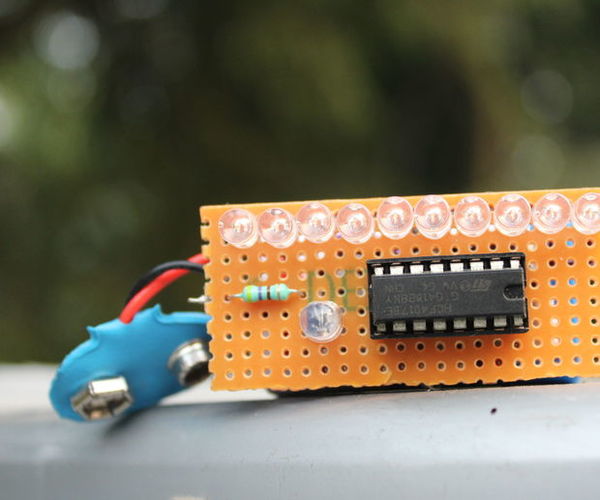
How To Make Led Chaser Without Ic 555
"Hello everyone, I will show you how you can make a simple led chaser without using ic 555. Here we will use ic 4017 decade counter ic...Also we use a RGB colour changing led,which is the heart of the circuit...the RGB led act as a trigger f0or ic 555..." [...]

How To Make RF Remote Control Home Automation System DIY
"Hello everyone, I will show you how you can make a simple 4 channel rf remote control home automation system for your home. You can control your any home appliances by using this device...You can control like led bulb,fan,mobile charger,fridge etc.... In this project we will use a 433 mhz rf module...The maximum range you can get upto 50 meters. So let's start..." [...]

DIY Split-Flap Display
"This is a work in progress split-flap display. Each module can flip between 40 unique characters: letters, numbers, and a few symbols. Multiple modules fit perfectly alongside each other to build bigger displays. The primary design goal was to make something that's possible to fabricate at home in small or single quantities and can be customized and built by an intermediate hobbyist at a reasonable price. This meant using widely available materials and avoiding any tooling with a high upfront cost. Following that philosophy, the design uses PVC ID badge cards for the flaps (rather than custom die-cut plastic), store-bought vinyl stickers for the letters, and is driven by an ubiquitous and cheap 28BYJ-48 stepper motor." [...]
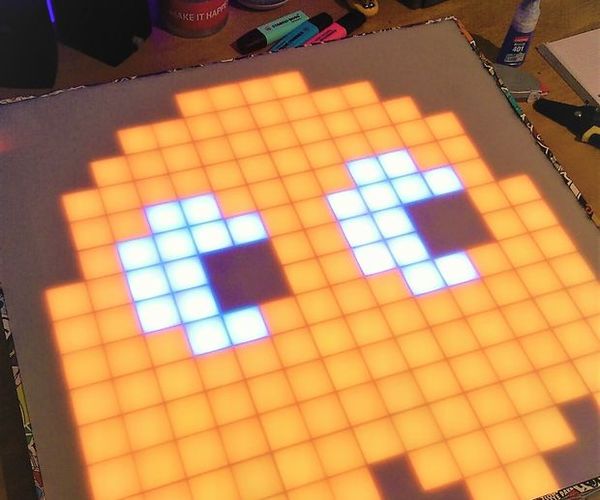
Led Matrix 16X16
"Hello, This is my first instructable I've ever written, so excited to work on this :) So in this project, I'm gonna show ya how to make this awesome 16 by 16 led matrix. It's verry nice to build and you learn a lot while doing it. Most of the time I just make stuf, because I like it, but this time I taught maybe it can be really functional. First of all, you can use it as an beautiful decoration piece (almost art :) ), secondly, you can use it as an dimmable light source for your vid's. So after al this blablabla, let's build stuff!! " [...]
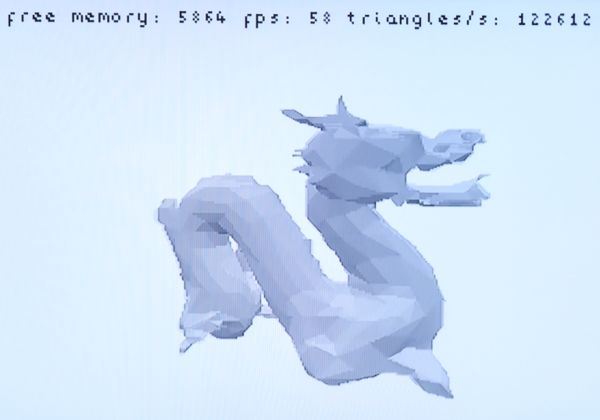
ESP32 composite video
"Work principle The code generates an analog signal using the internal DAC according to the PAL and NTSC standards described here. Each image consists of two half frames (even and odd image lines). The blank level is at ~0.3V(values depend on PAL/NTSC). The synchronization is done using some pulses at 0.0V. The following image gives an overview. Vertical synchronization is achieved by the purple pulses, horizontal by the red ones:" [...]
That's all Folks!


